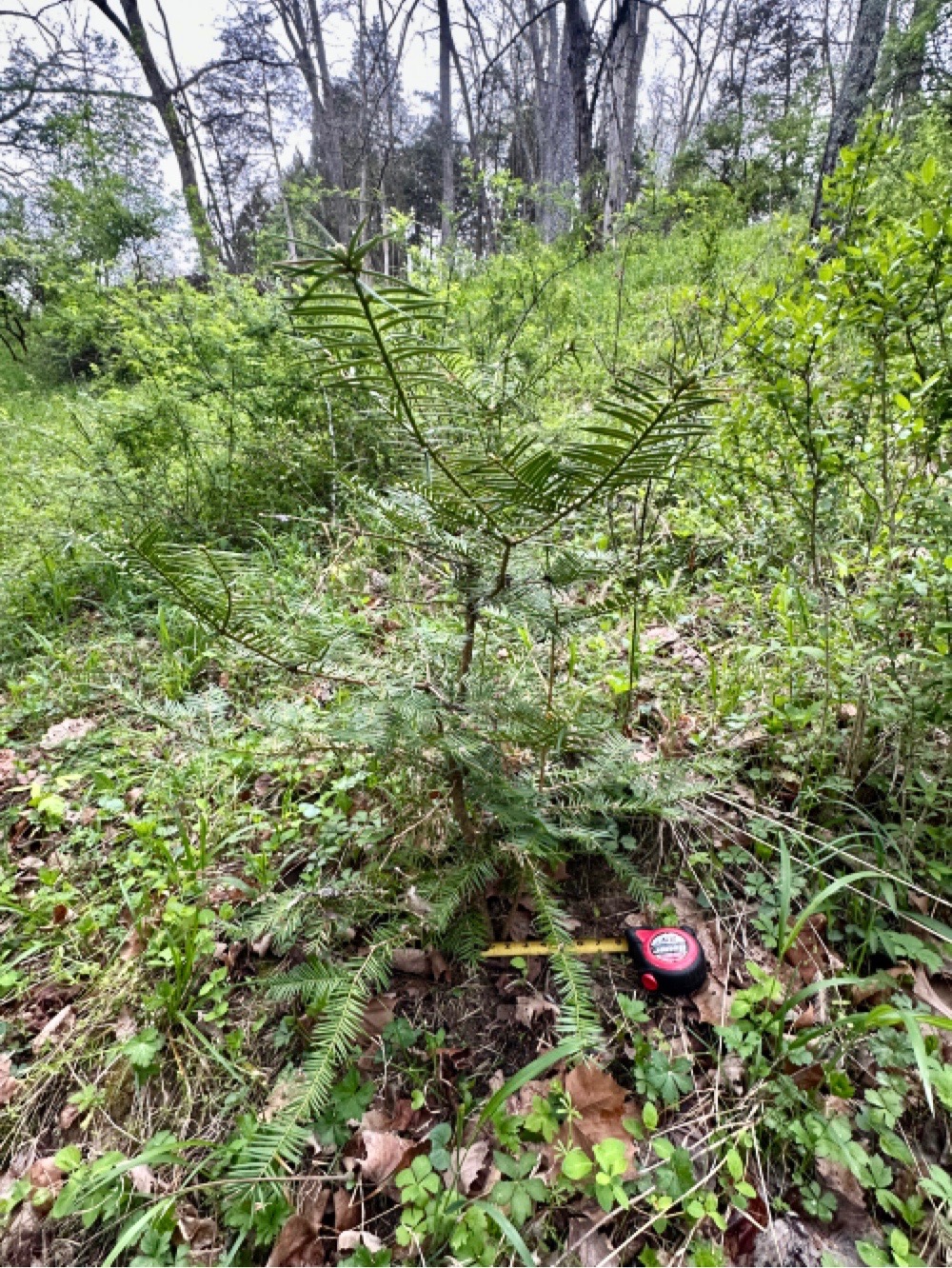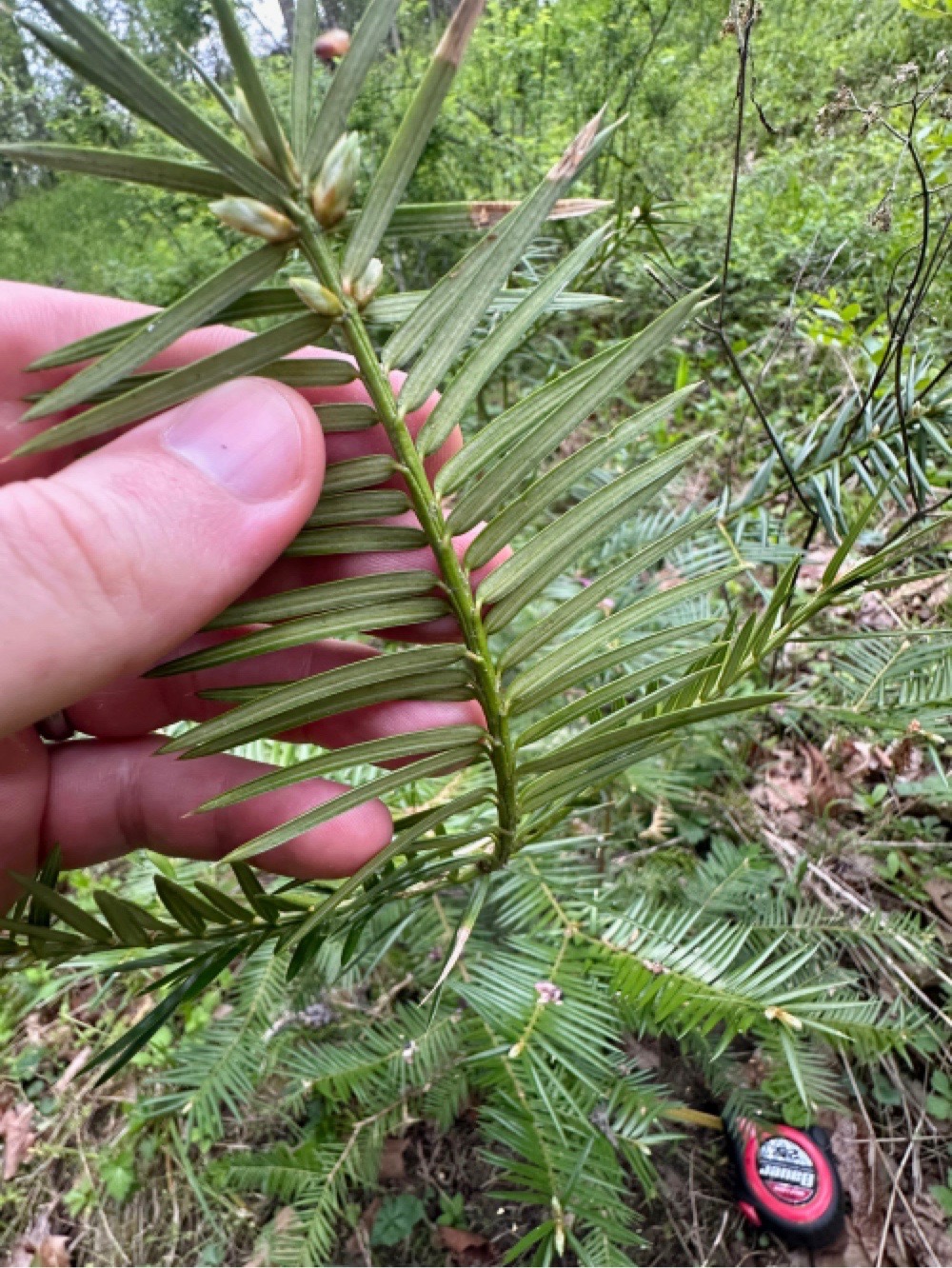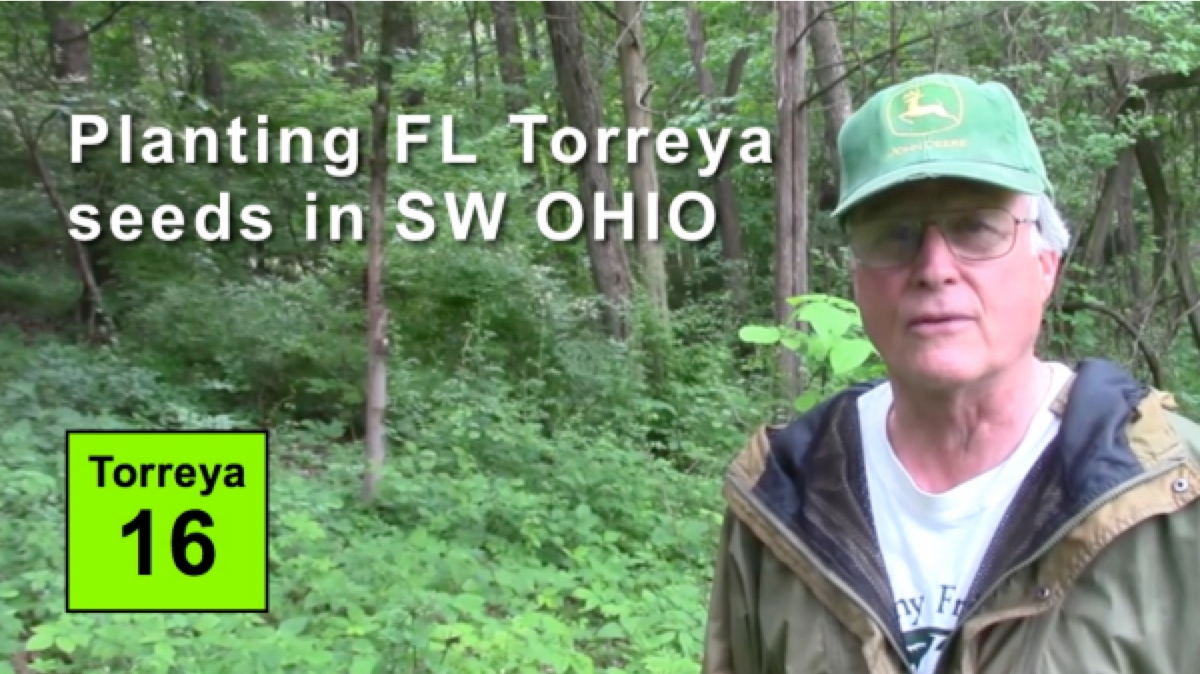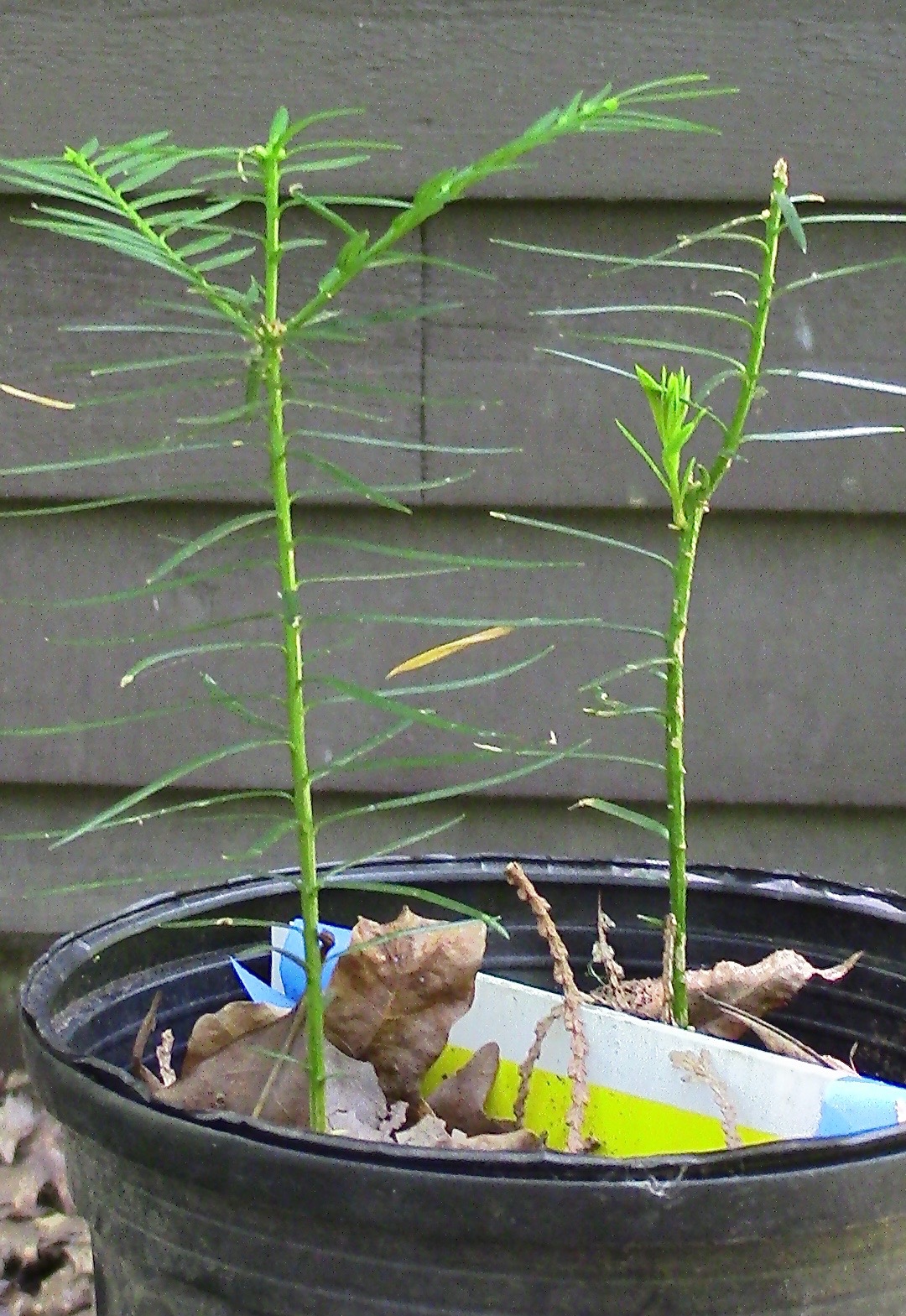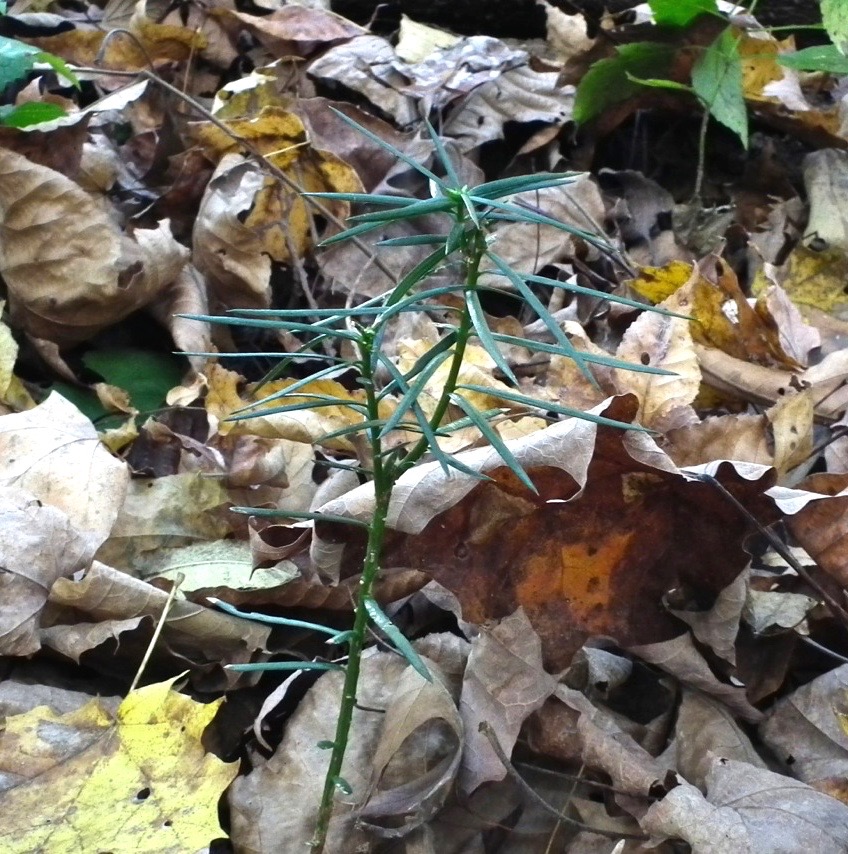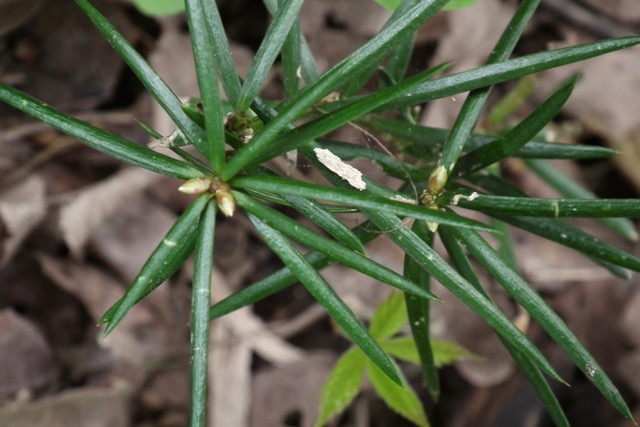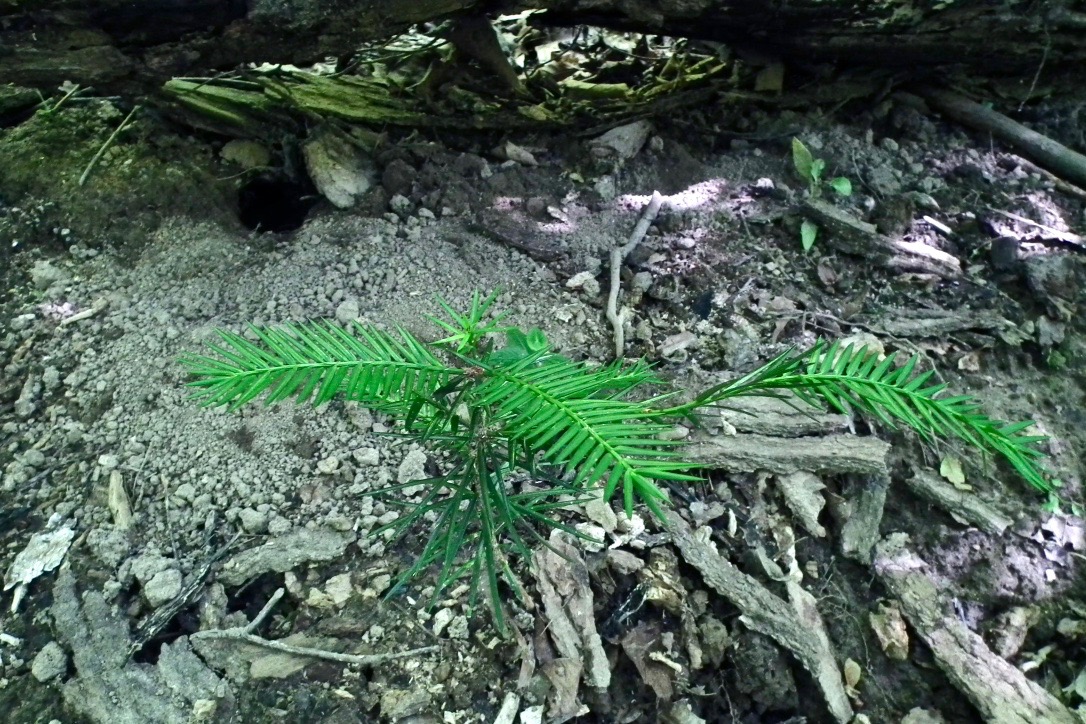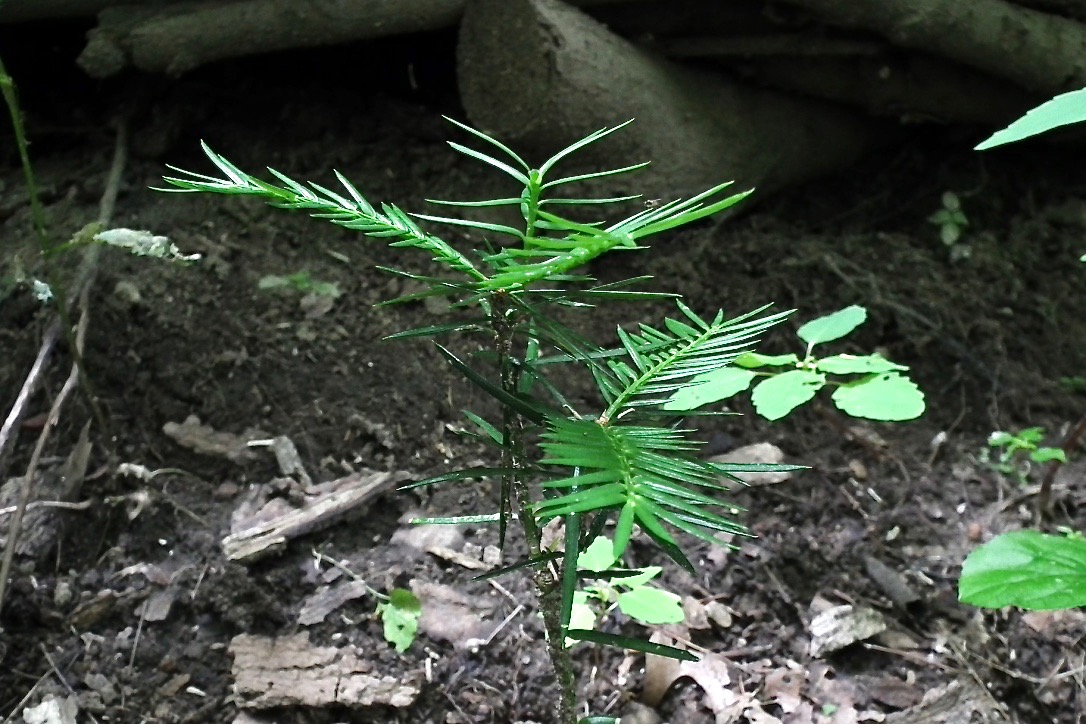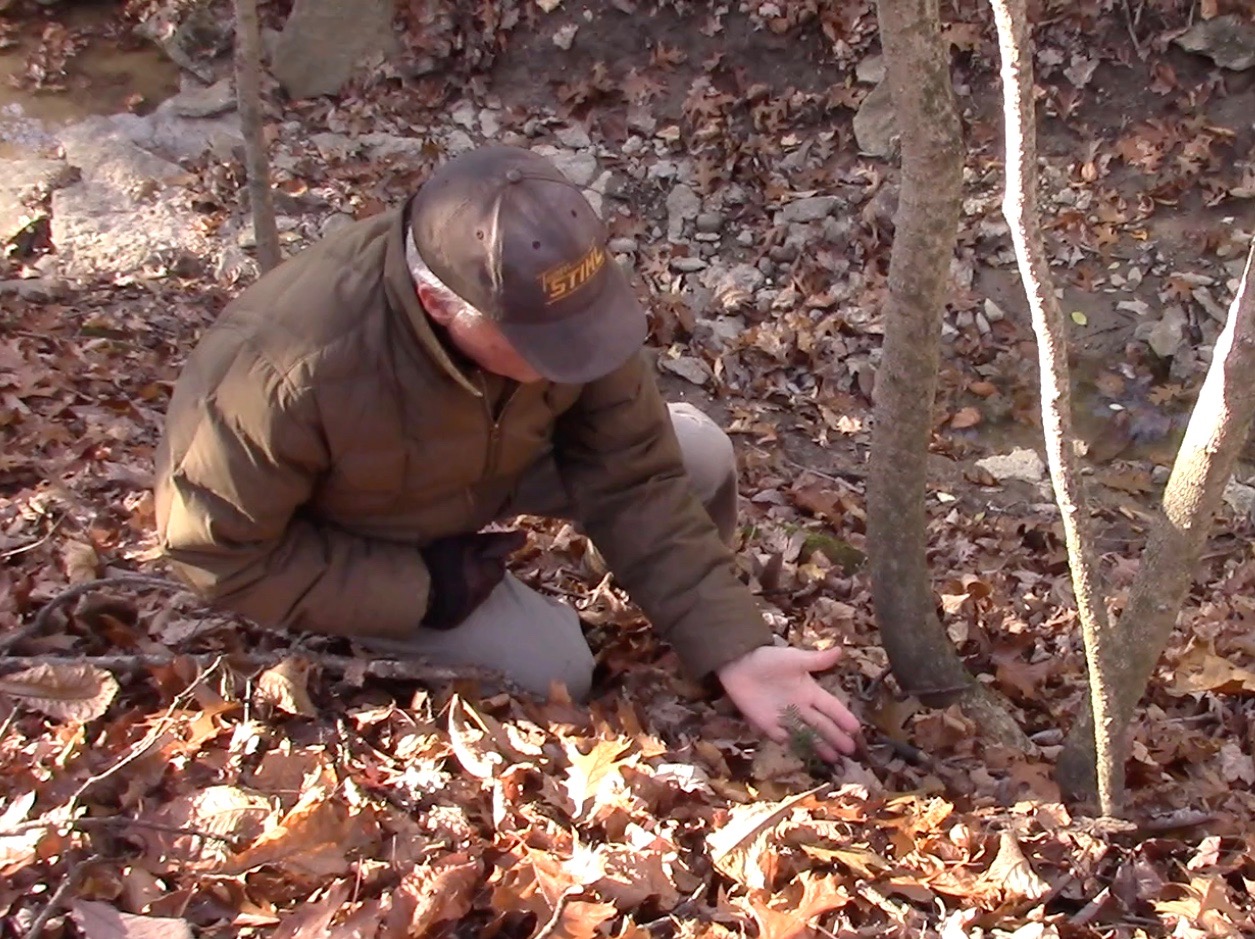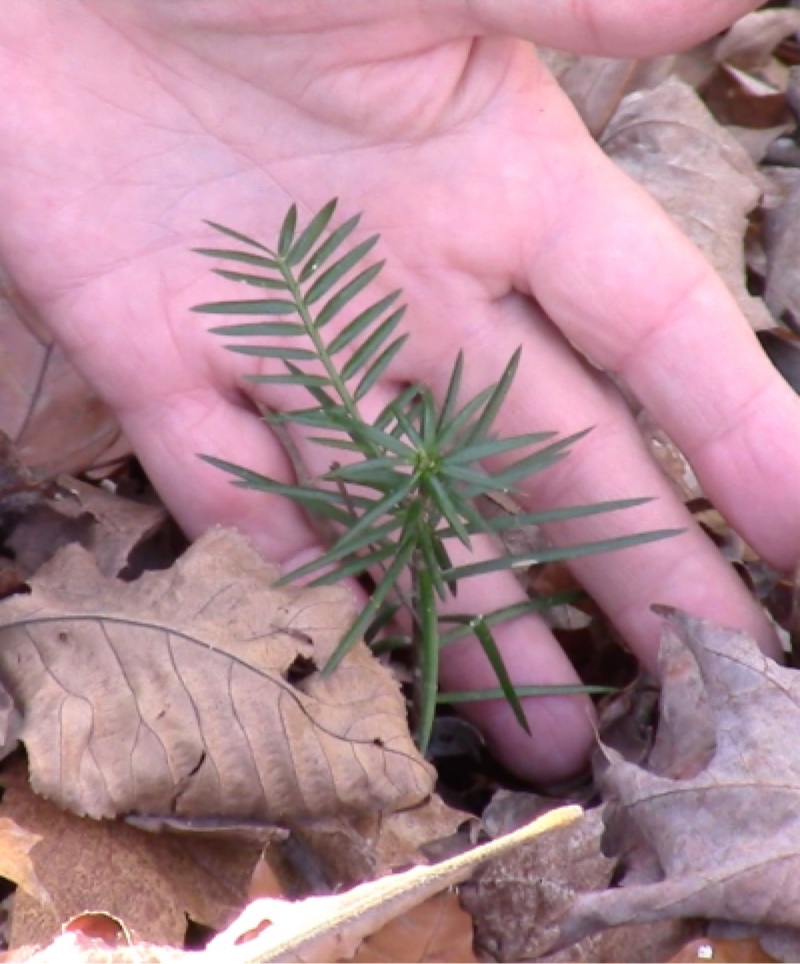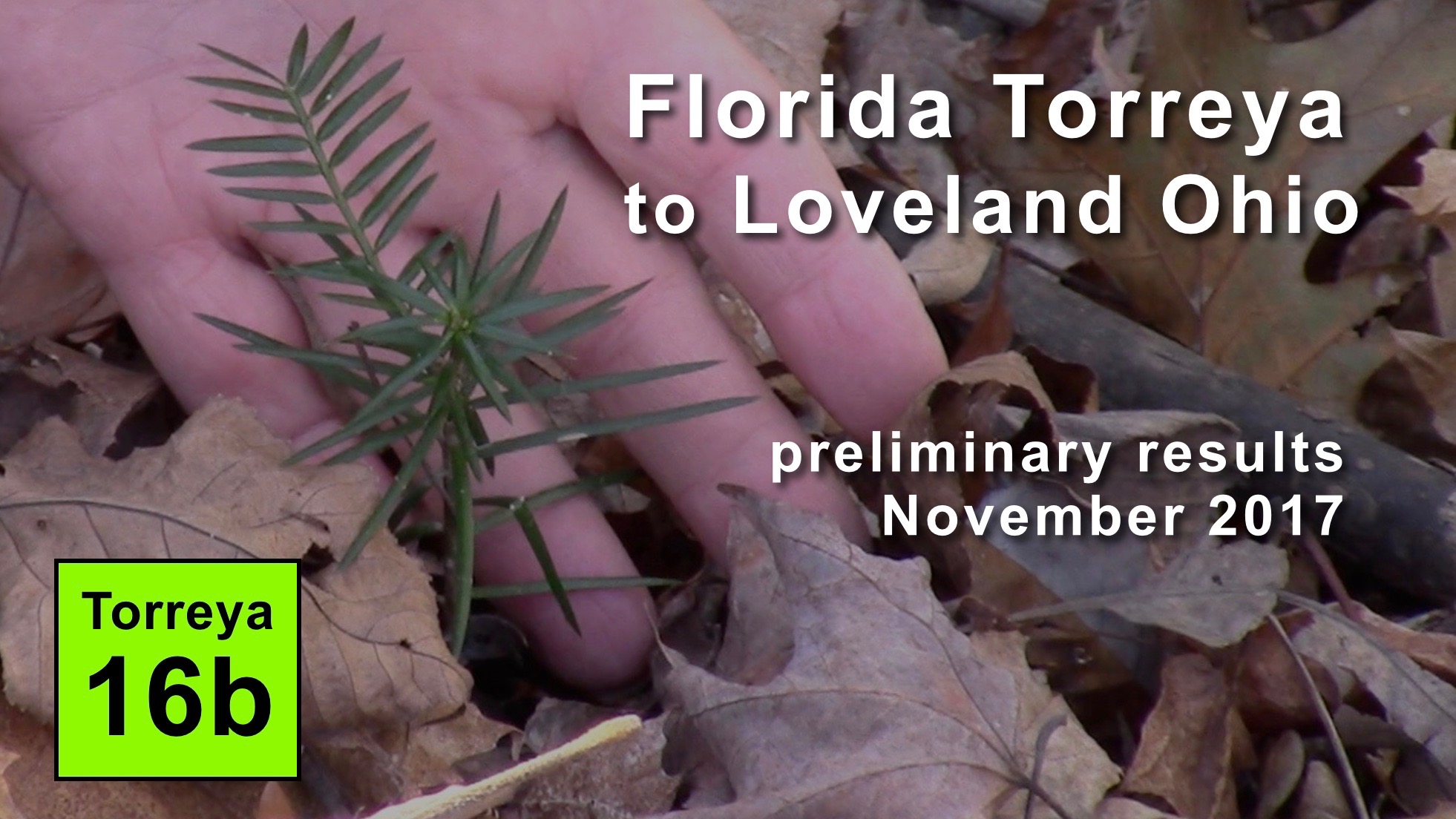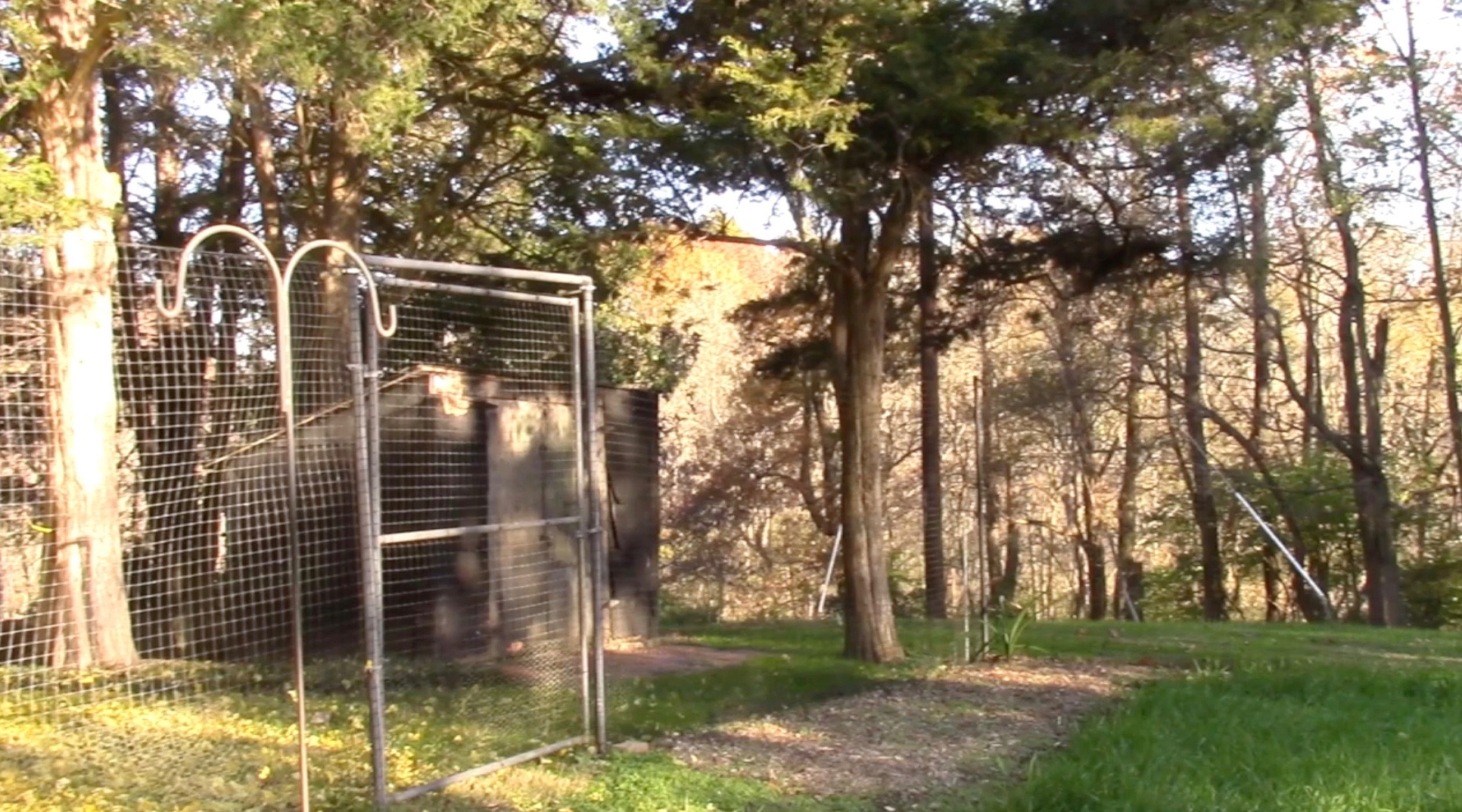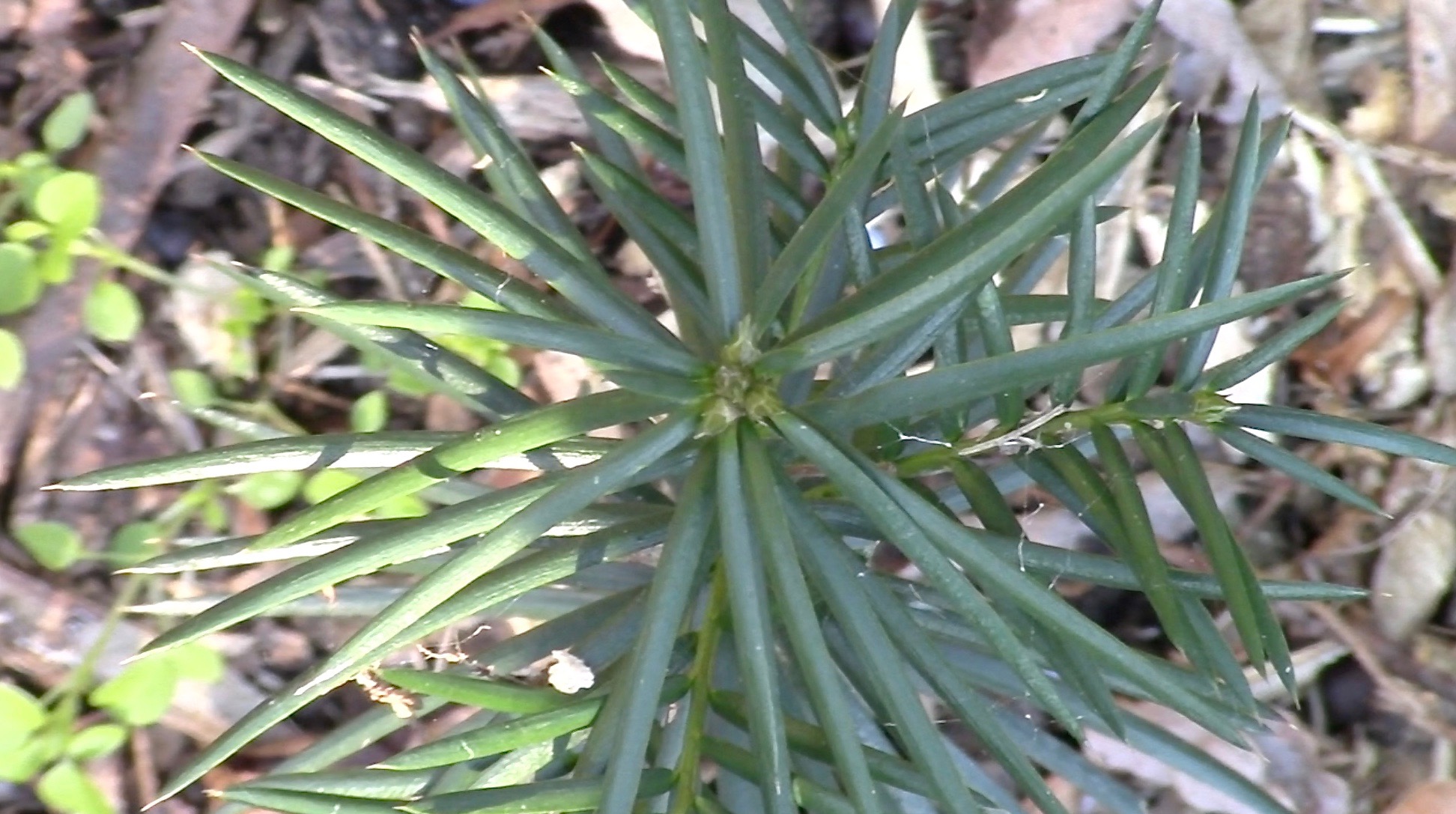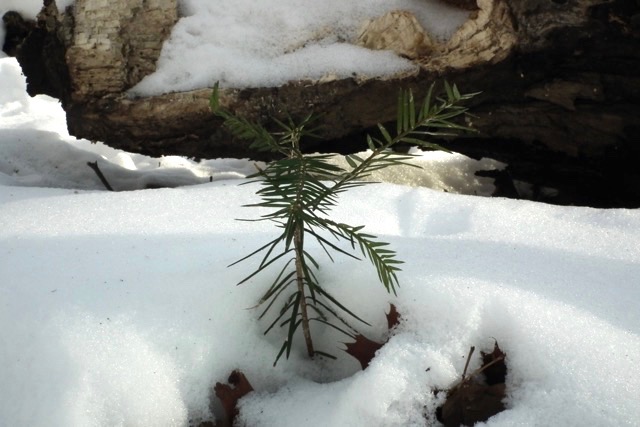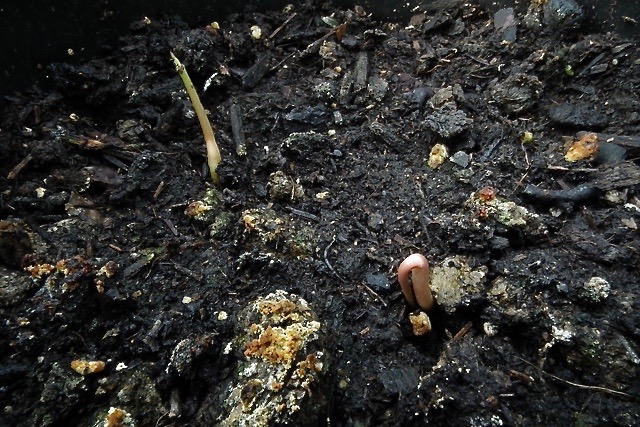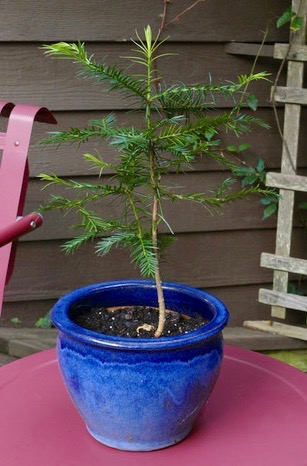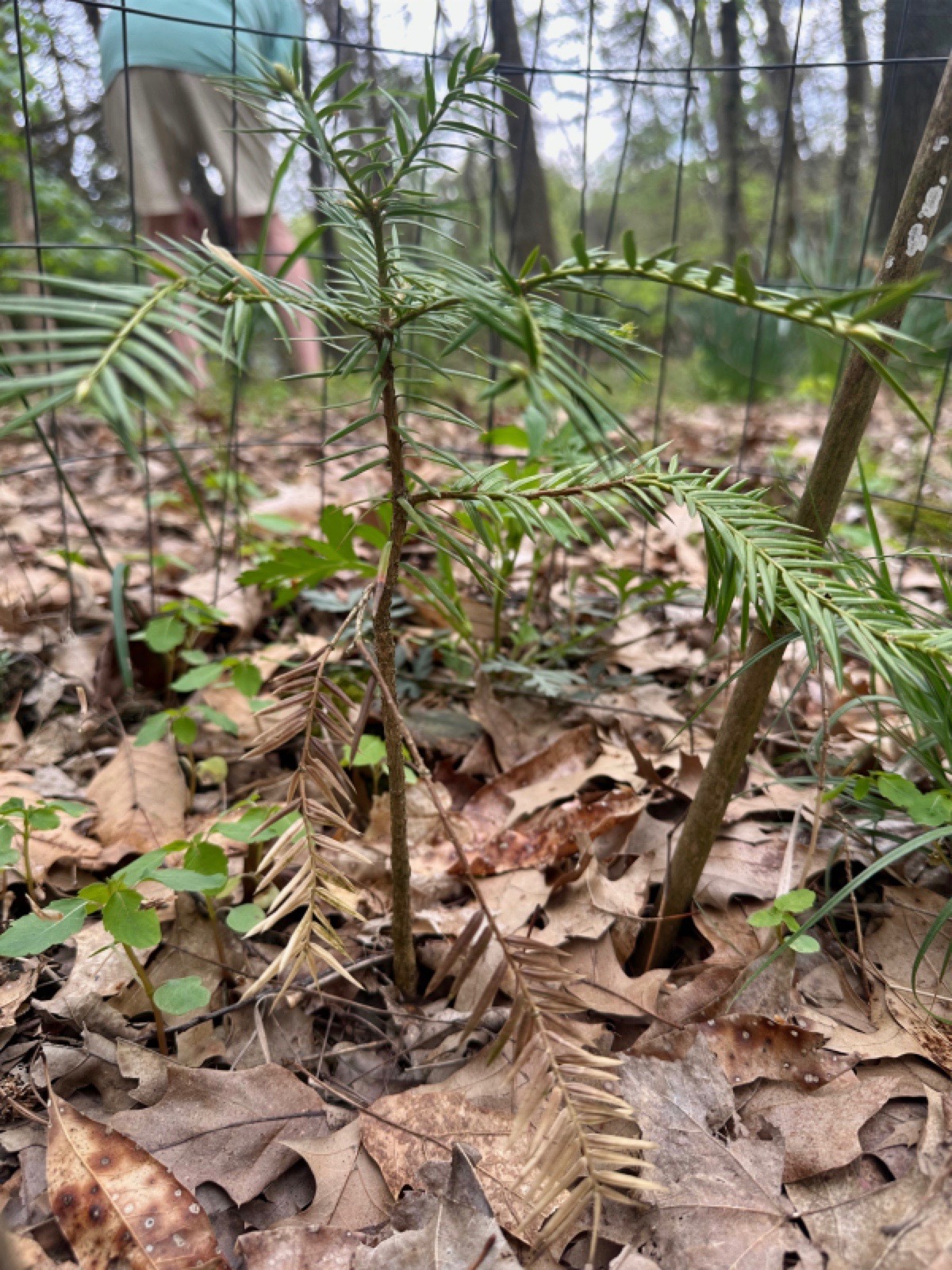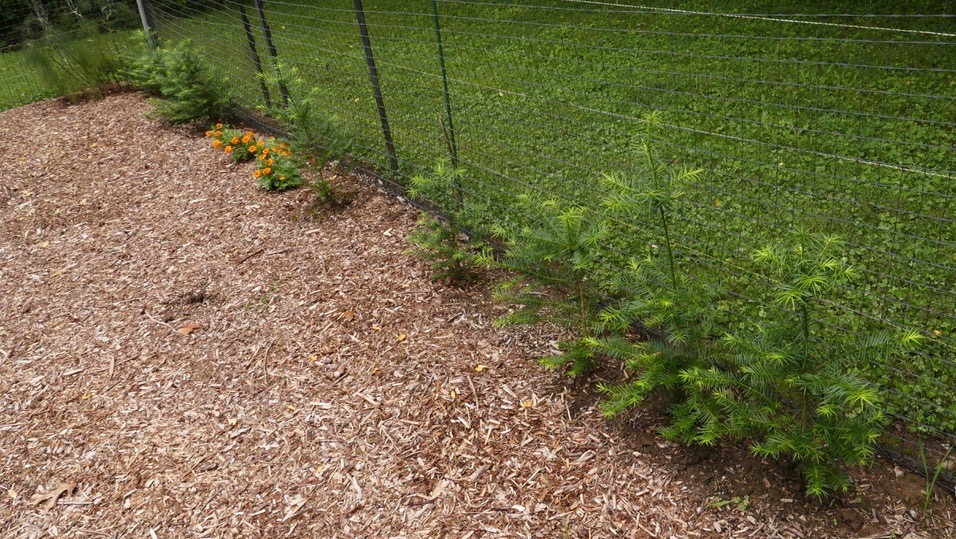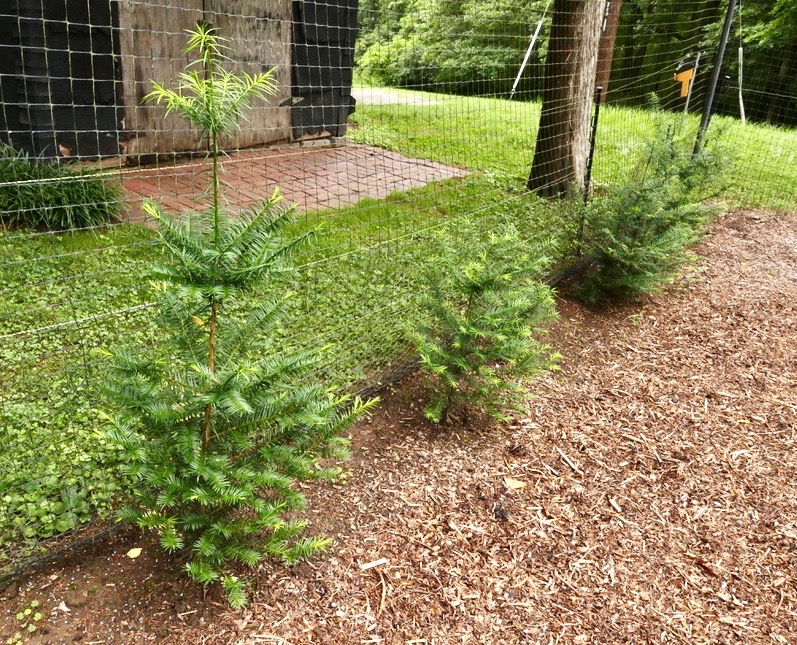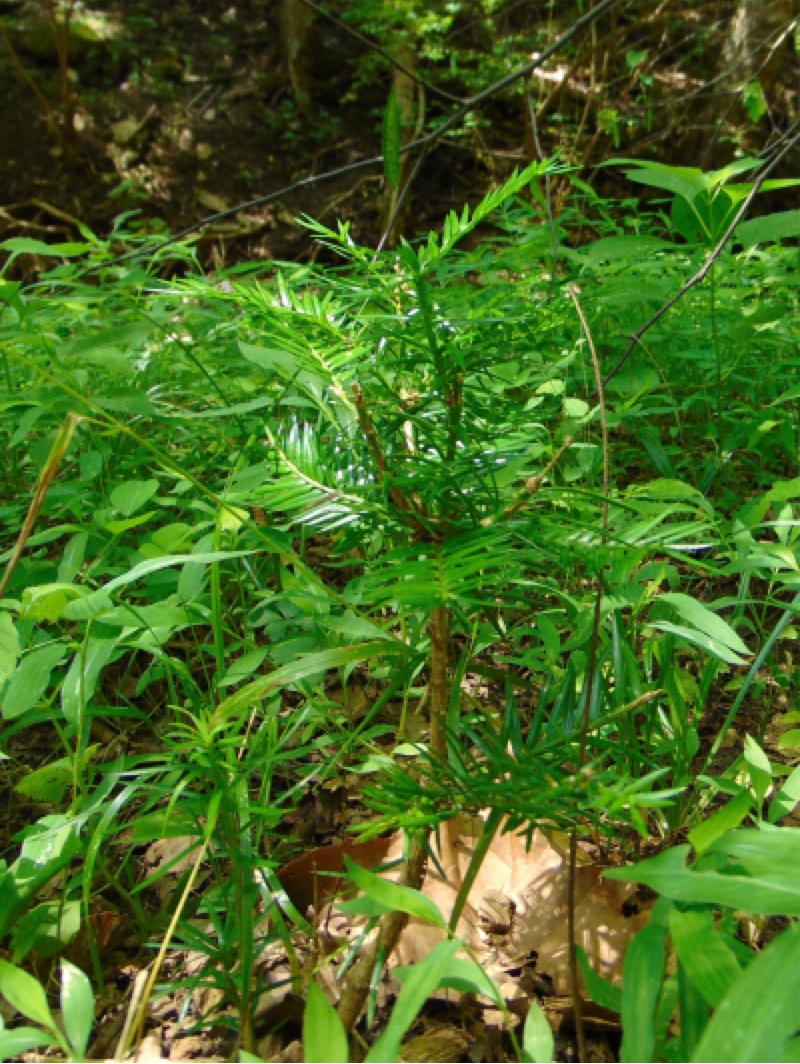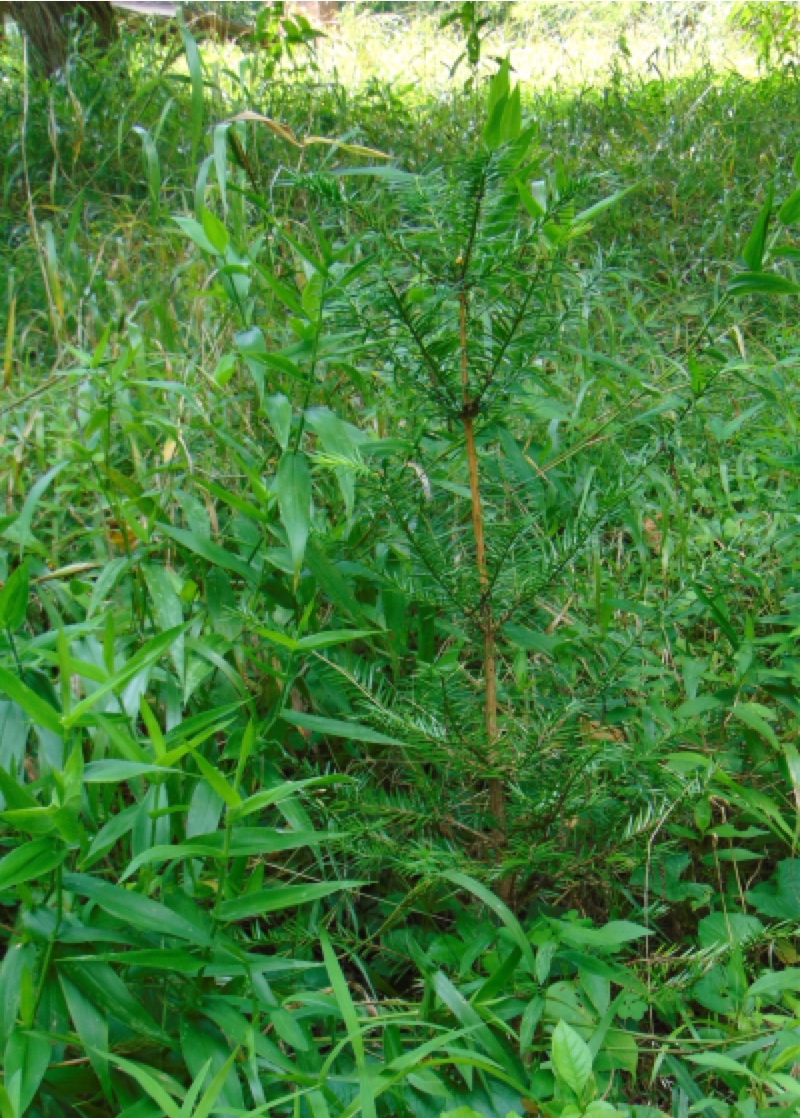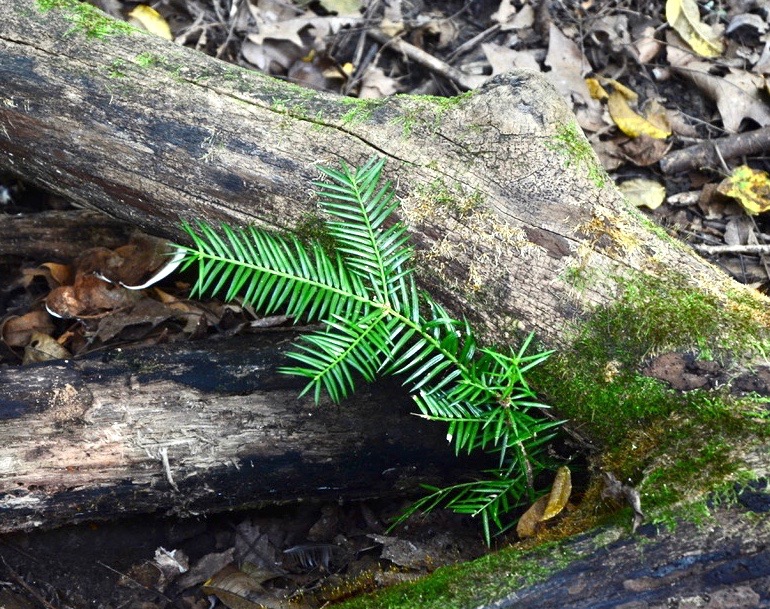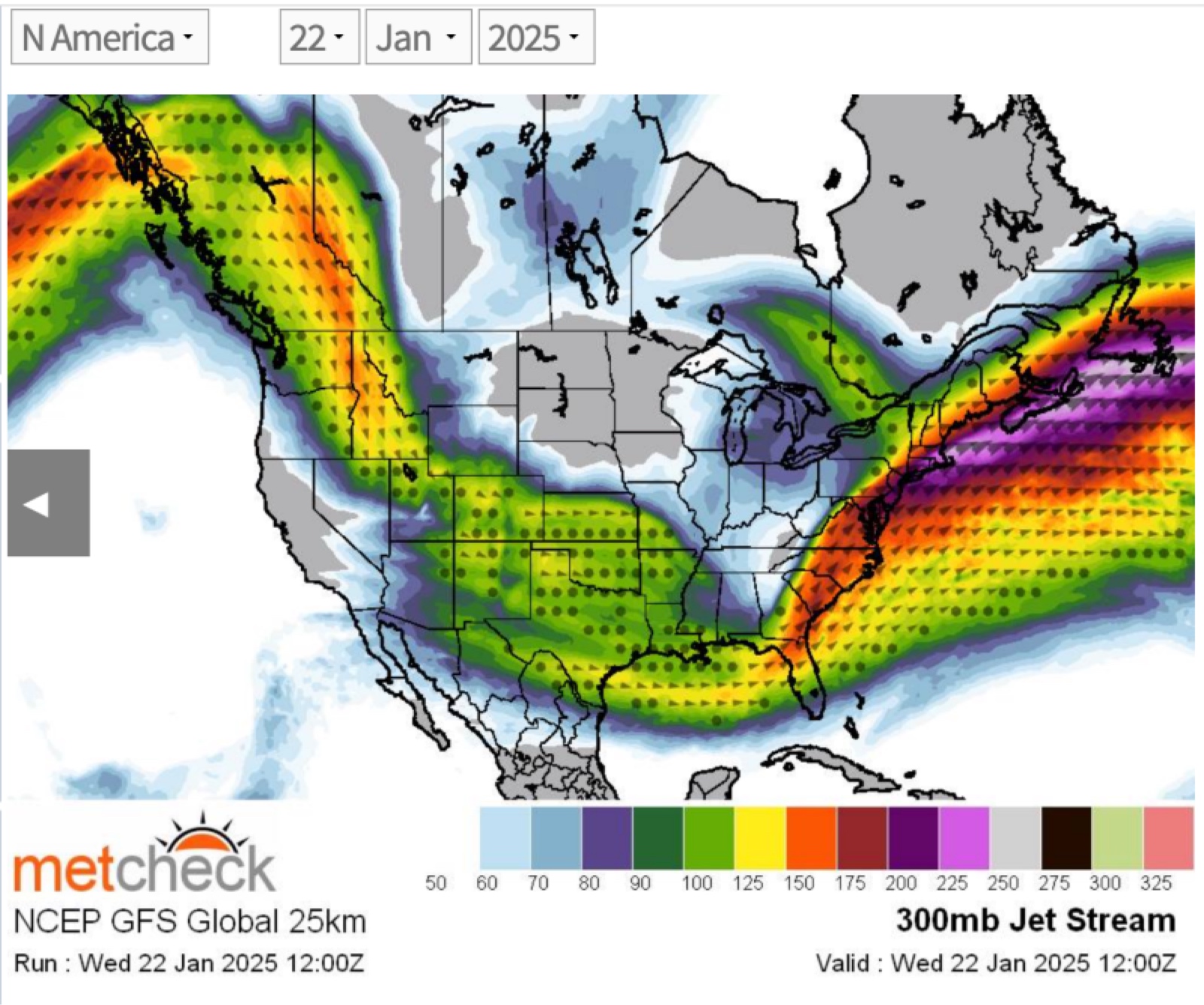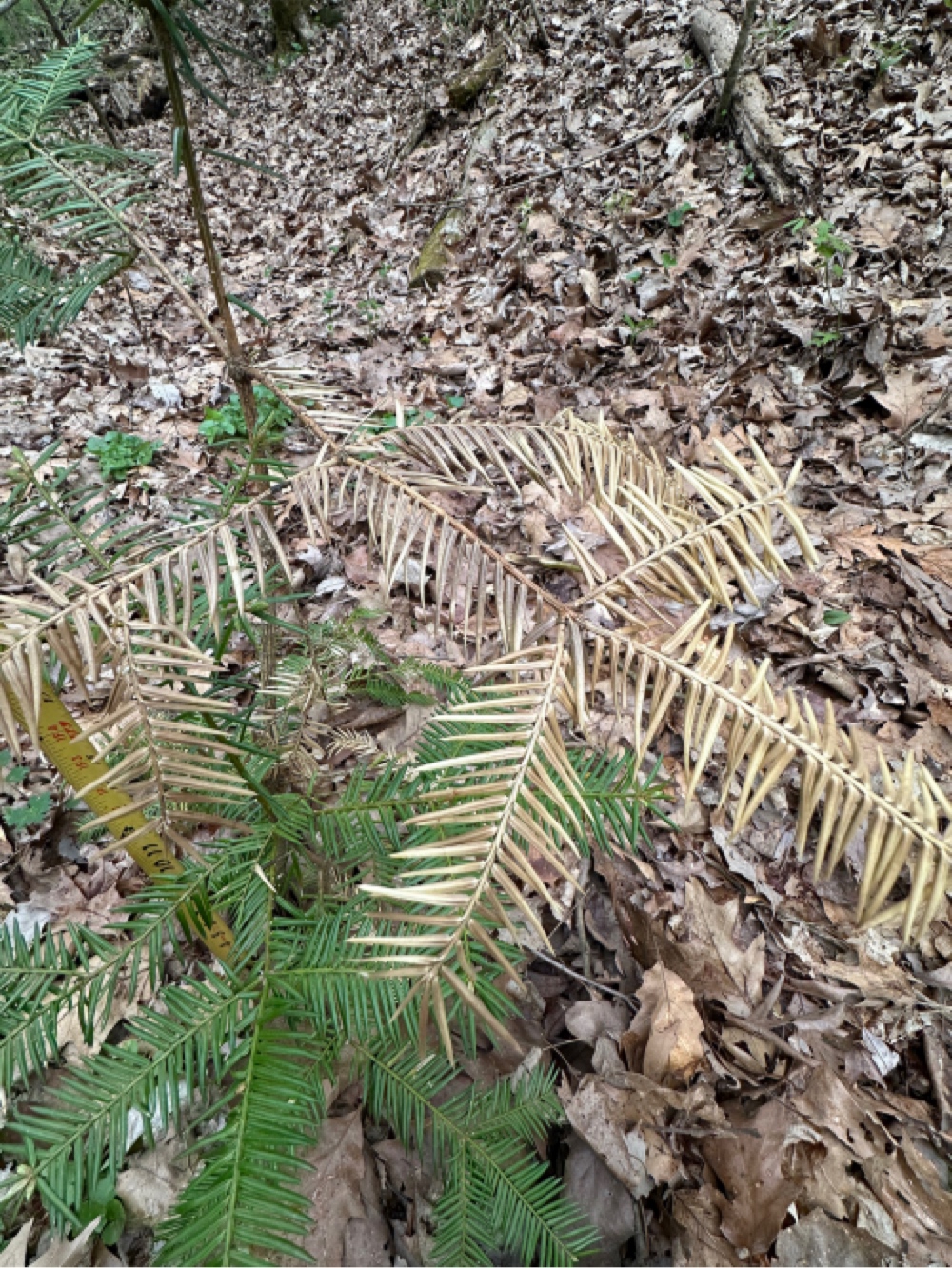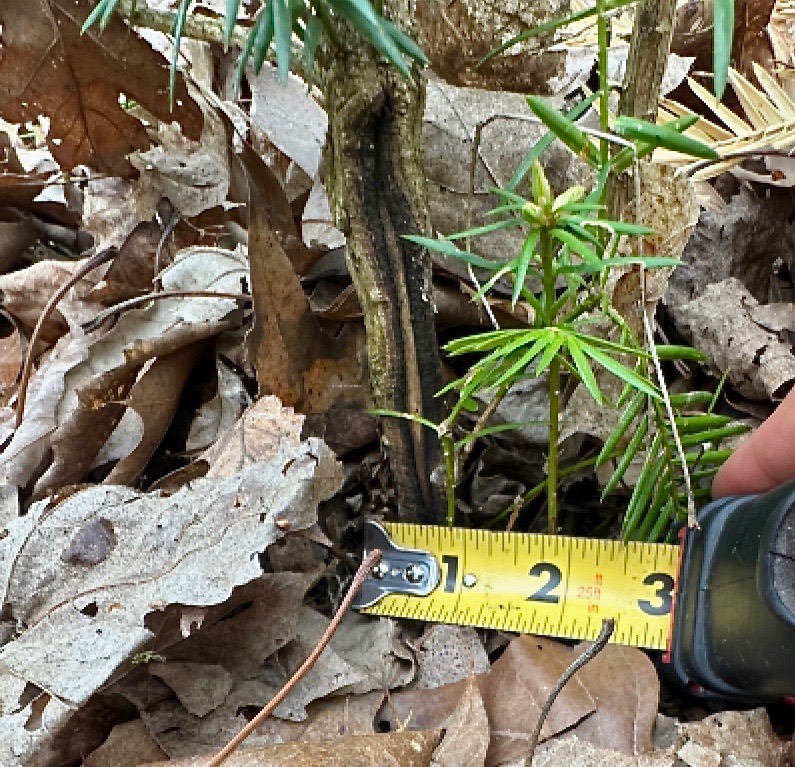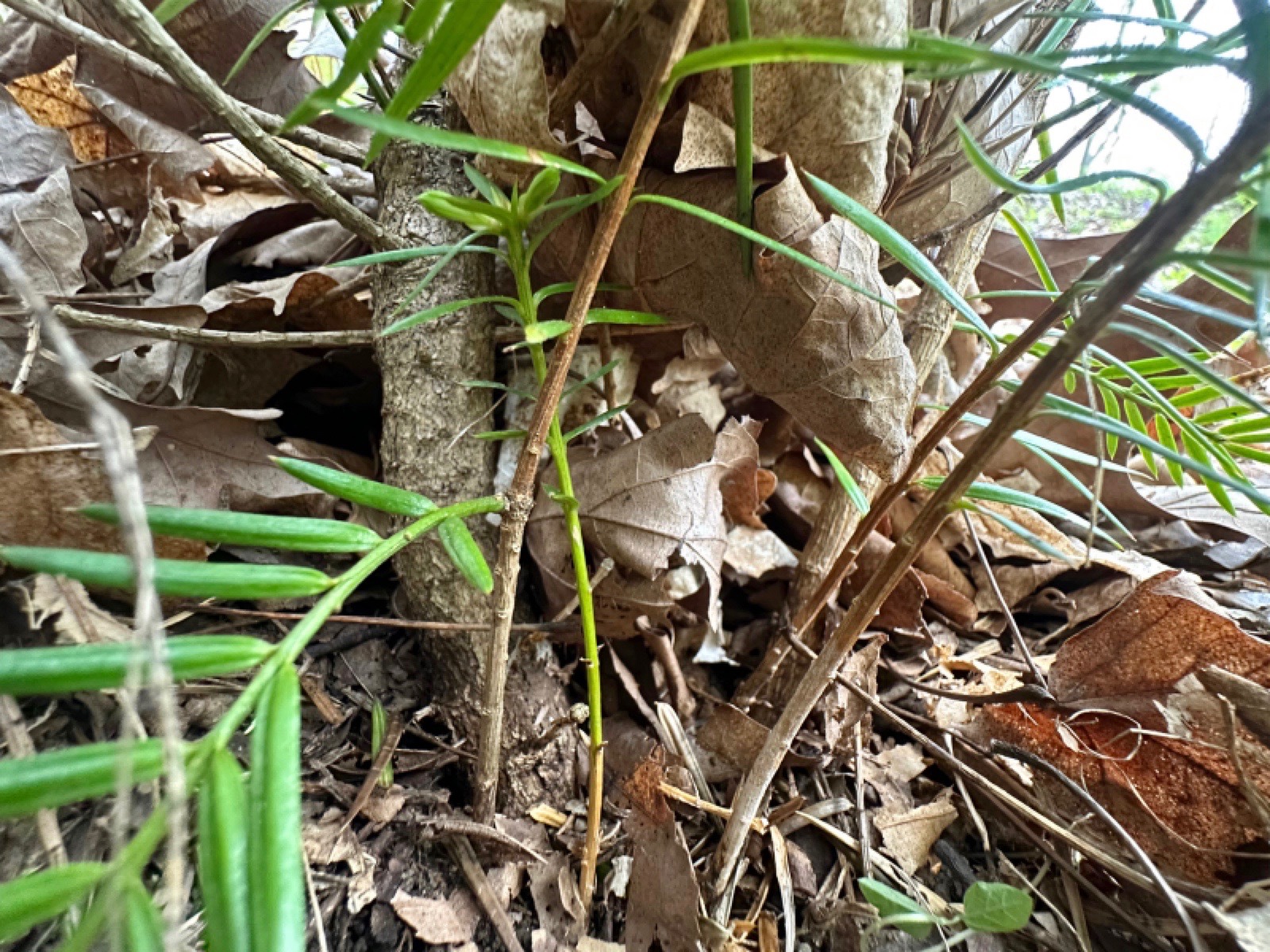Torreya taxifolia to Cincinnati (Loveland), OHIO
Robert Miller (and, later, his neighbor John Patterson)
(reports listed chronologically)
THIS SITE IS THE FIRST TORREYA GUARDIANS FIELD EXPERIMENT IN THE CINCINNATI AREA:
VIDEO: Planting Florida Torreya Seeds in SW OHIO - assisted migration This wild forest site on Bob Miller's property in Loveland Ohio (northeast of Cincinnati) is rich in diverse habitats, notably a deep ravine in glacial till down to the limestone bedrock. This is the first video in which current species range maps are overlaid on sections depicting native trees onsite. A total of 56 seeds were planted May 2015 (seeds from the 2014 harvests).
33 minutes - filmed May 20, 2015
• November 2015 - Bob Miller receives 40 seeds from the new harvest, via Jack Johnston.
• Spring 2016 - Bob Miller receives a pot containing 2 young seedlings, donated by Jim Thomson (Cullowhee NC). He plants both in the cool fall of 2016 under a deciduous wild canopy in his forest: "They were planted on a north-facing slope with limestone bedrock. In addition they are in an area of mostly young maple trees so that they are not in dense shade. (They have cages around them.)
APICAL RECOVERY FROM HERBIVORE NIBBLING
LESSON: Trust your seedlings to recover from even severe apical herbivory!
ABOVE LEFT: Mid-June 2016 the right-most seedling in the pot shows new-growth trending to become the new main stem, following previous herbivorous destruction of the main stem apical leader. Sources: Photo by Connie Barlow of 2 seedlings donated by Jim Thomson (Cullowhee, NC) to Bob Miller of Loveland, OH (who took the photo above right).
ABOVE RIGHT: October 30, 2016 shows the same seedling on the day it was planted out into wild forest. It is photographed from the same angle as photo left. See that the spring new growth has now matured into vertical apical growth. But notice that the nipped-off stem also produced new apical growth from directly beneath the nipped-off top. So now there are two apical stems.
Photo above left .
• February 2017 - (email): "A couple of months or so ago I went out to check on our two torreyas and could find only one. After some searching I found the second, completely uprooted and lying on the ground. The metal cage I had put around had rolled down the hillside. Since one of the legs on the cage was noticeably bent, I concluded that a deer had knocked it over when it went to nibble on the torreya. However, the plant showed no signs of damage and was still dark green. So I replanted it and hoped for the best."
• March 30, 2017 - (email) "My two seedlings continue to look healthy, including the one that was completely uprooted."
• April 2017 - Bob Miller receives 60 seeds from Connie Barlow, which were donated by Frank Callahan from Frank's autumn 2016 harvest in Medford Oregon. The parent trees of that Oregon harvest are shown in a video produced by Connie Barlow, February of 2017. Bob planted the Medford seeds under the same deciduous forest canopy area as where he planted the 2 potted seedlings below, as the two seedlings "seem to like the location."
• April 21, 2017 - photos (by Bob Miller) of the TWO SEEDLINGS (outplanted from pots initially germinated in Waynesville NC):
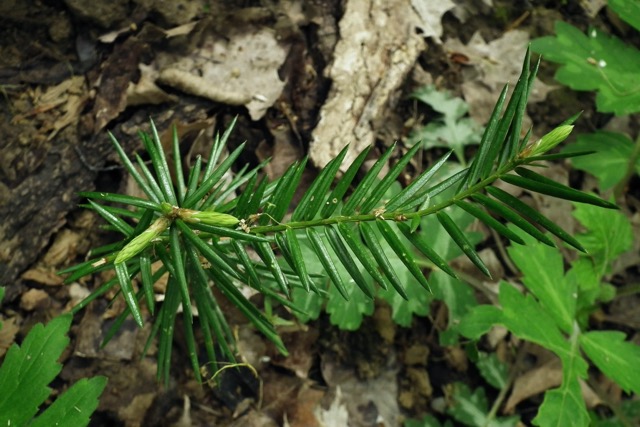
PHOTOS ABOVE: New growth on the 2 potted seedlings outplanted Fall of 2016
Photo right is of the seedling that was uprooted by a deer and subsequently replanted.
• June 27, 2017 - photos by Bob Miller:
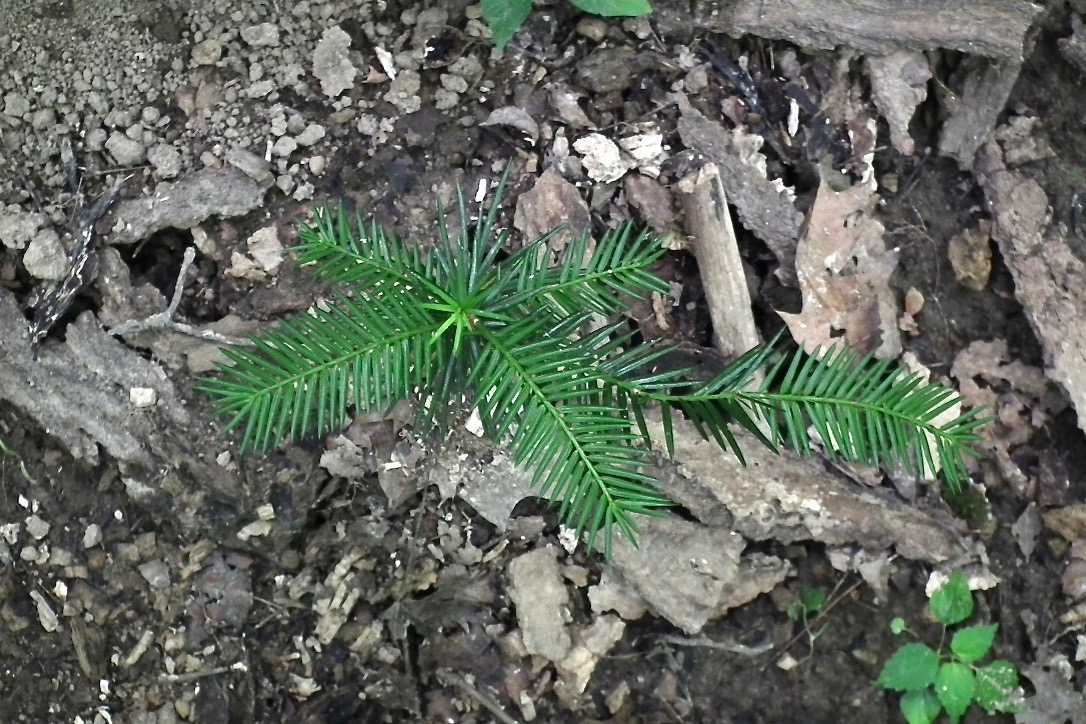
Photos above show the same seedling as April 21 photo left. Notice that in the second photo (upper left) there is a 3-inch diameter critter hole.
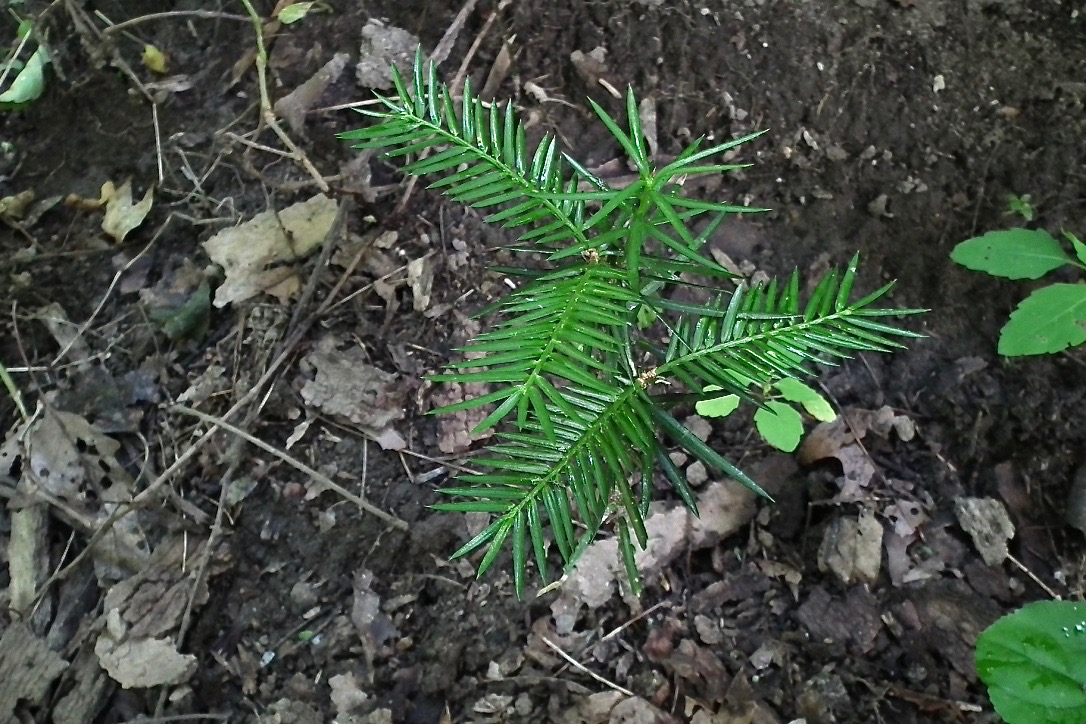
Above are 2 photos of Plant no. 2, which has put out less new growth — but that's not surprising because it is the one I found uprooted.
• November 12, 2017 - Connie Barlow visited Bob Miller and both walked the land in search of any evidence of success from their May 2015 "free-planting" (shallow burial, with no wire or rock protection) of 56 seeds. Seeds had been in the ground for two winters — which is usually when the first above-ground growth becomes apparent.
RESULTS: We spotted only two seedlings — both were really difficult to notice, so there may be more. PHOTOS BELOW show Bob with one and Connie with the other. Both seedlings are on the same slope of the same ravine, with the seedling shown by Connie being 50 yards farther downstream. That's a Shagbark Hickory behind Connie.
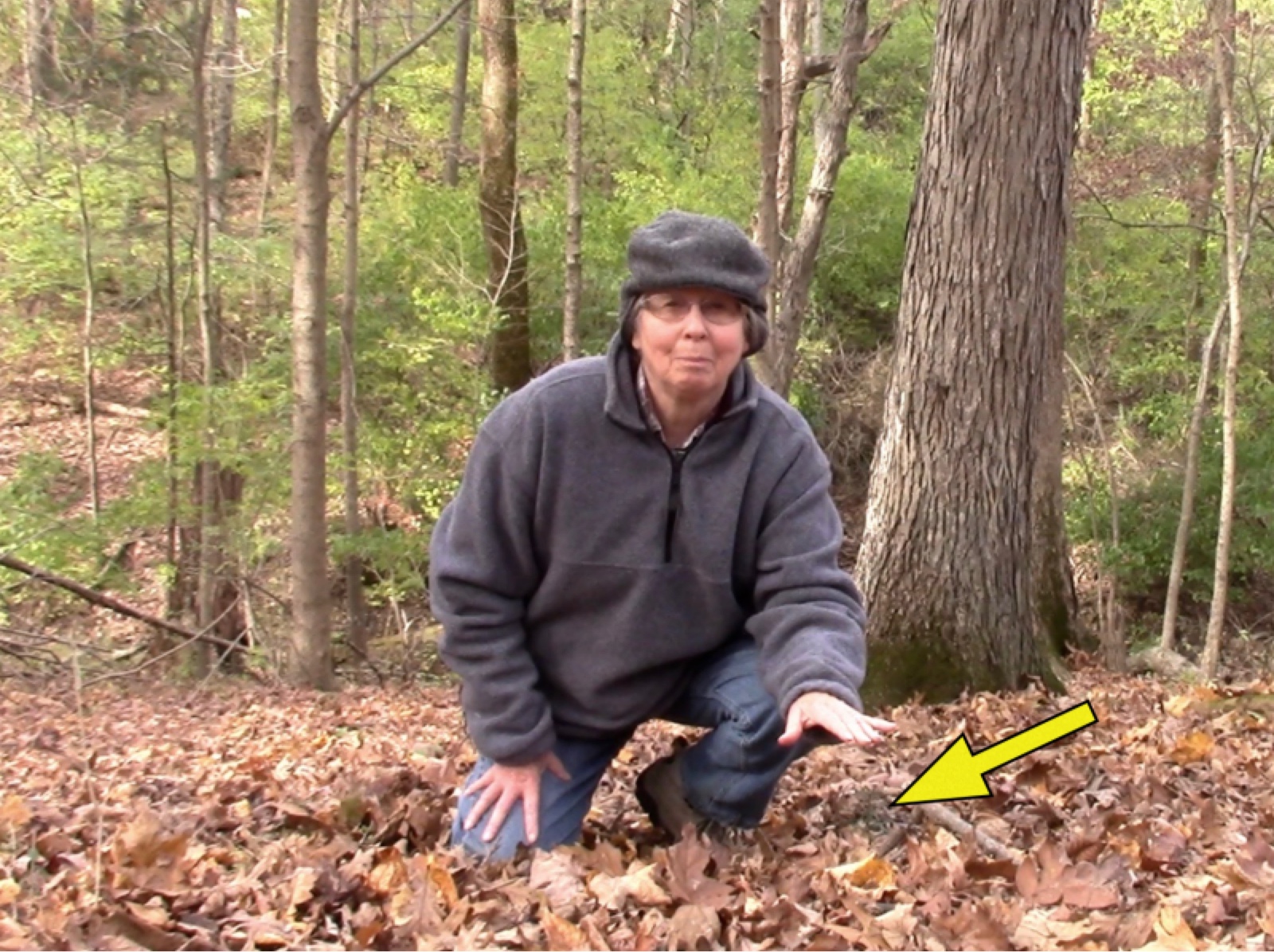
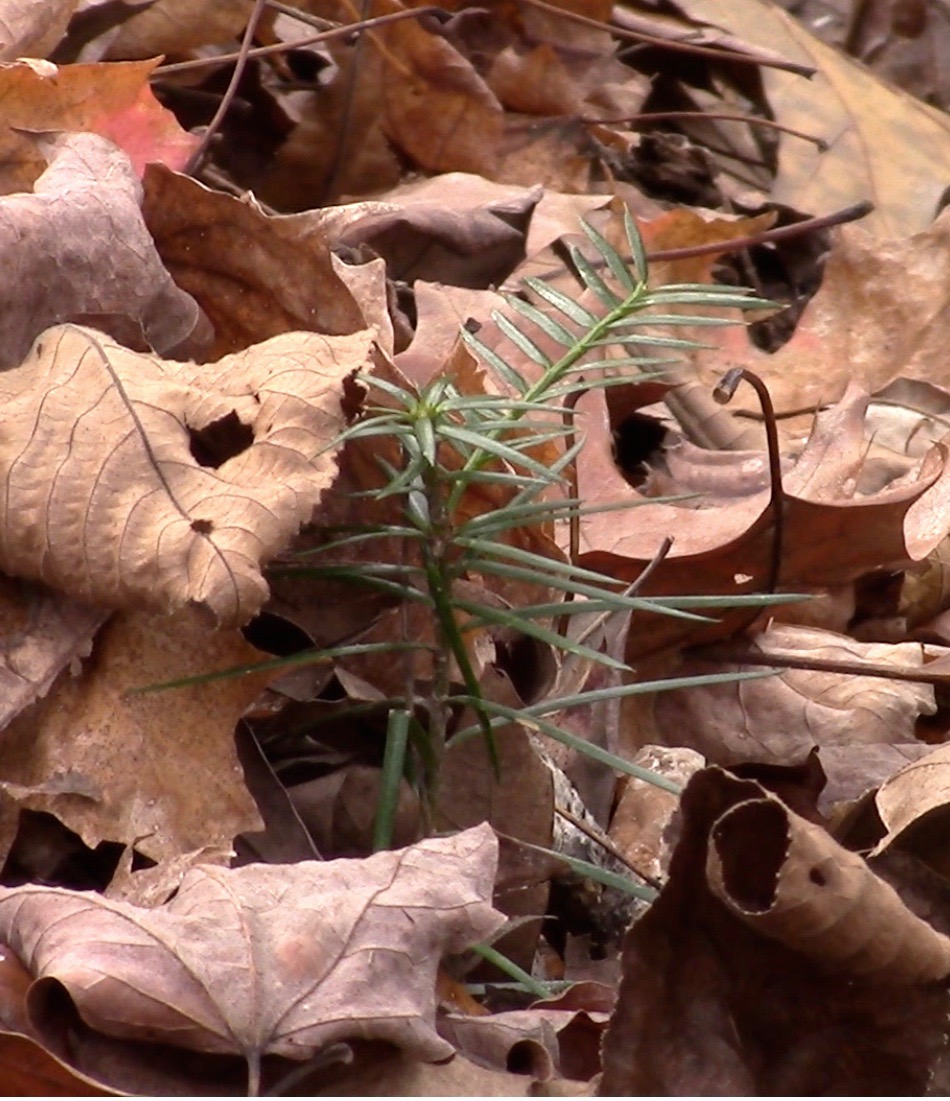
16b: Florida Torreya to SW Ohio - preliminary report (Nov 2017) Documents progress in all 3 elements of this experiment led by Bob Miller: (1) free-planting of seeds (shallow burial, no protection) into wild regrowth forest; (2) shallow burial outdoors in a rodent/deer impenetrable exclosure; (3) planting into regrowth forest of two potted seedlings (one rodent-damaged).
15 minutes - filmed November 12, 2017
This is the second installment in video documentation of an assisted migration experiment of the endangered Florida Torreya into southwestern Ohio (Loveland). This video was filmed November 11-12 and documents progress in all 3 elements of this experiment led by Bob Miller:
(1) Free-planting of seeds (shallow burial, no protection) into wild regrowth forest in May 2015 (using seeds from the March 2014 seed harvest).(2) Shallow burial outdoors in a rodent/deer impenetrable exclosure of 29 seeds planted very soon after harvest in November 2015 (from the fall 2015 seed crop).
(3) Planting into regrowth forest in autumn 2016 of two potted seedlings donated by Jim Cullowhee, grown from seeds harvested fall of 2013.
LEARNINGS:
• The poor success rate of the May 2015 free-planting into wild forest may owe to any combination of these factors: (1) deterioration or extended stalling of embryo development during the winter that Barlow maintained the Fall 2014 seeds above-ground prior to final distribution; (2) shallow burial accounts for heavy rodent predation of the seeds; (3) seedlings were very difficult to spot amidst the fallen leaves.
• In contrast, the tremendous success of the rodent-protected seeds planted six months later could be due either to (1) elimination of rodent seed predation or (2) strength of embryos owing to immediate placement in-ground following harvest. Advance to timecode 03:42 of the November 2017 VIDEO to view video documentation of the 22 within-garden germinations. And see photos drawn from that video immediately below.
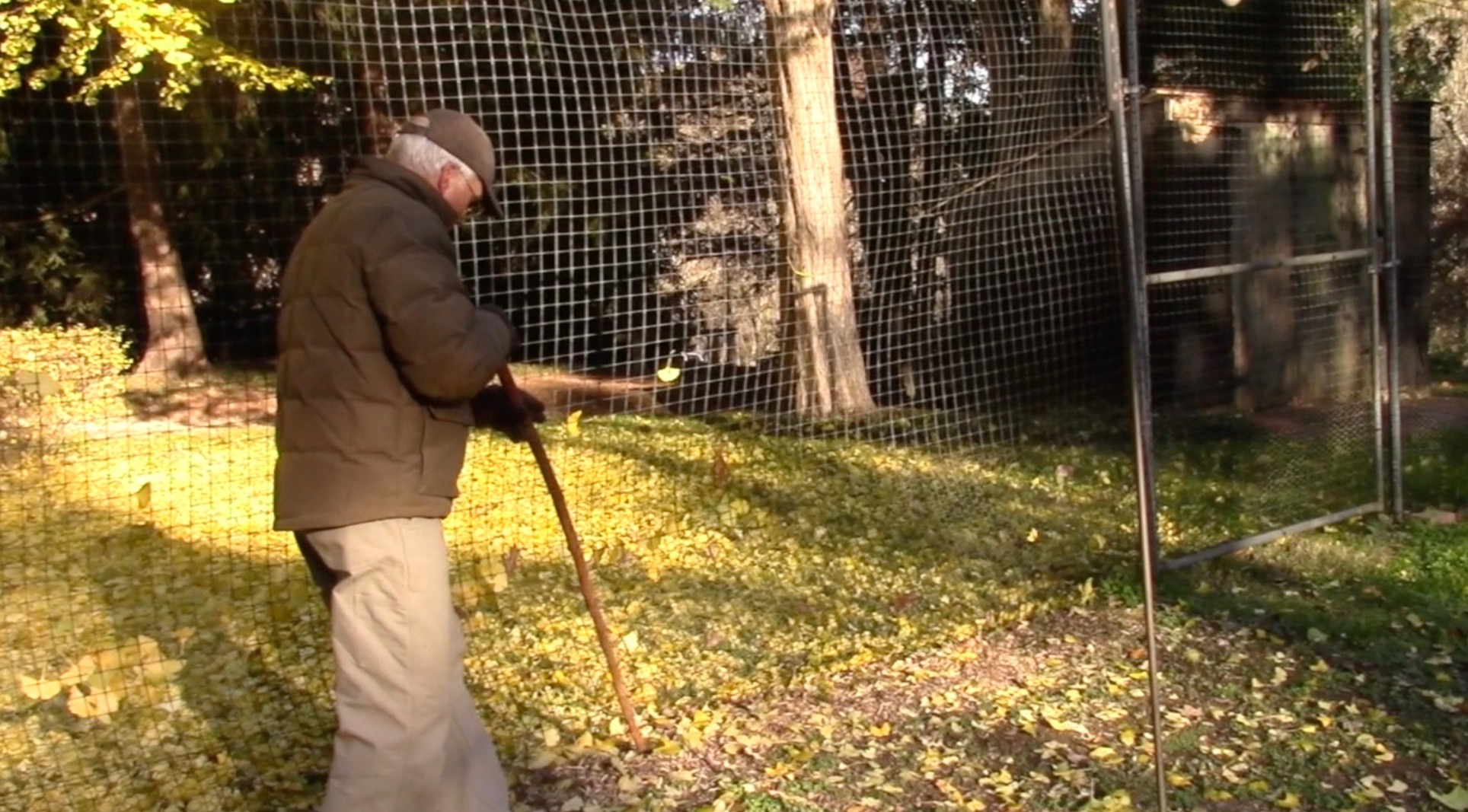
ABOVE: NOVEMBER 2017 Bob Miller uses stick to show and count seedlings exactly 2 years after the seeds were shallow-planted into this rodent+deer protected garden of his neighbor. A total of 22 of the original 29 seeds had growth evident above ground. Two factors account for the great success: (1) total protection against rodent seed theft and herbivore browsing and (2) swift planting of seeds after October 2015 harvest (so high viability). A total of 13 seedlings were counted to the left of the gate (where Bob) is shown, and 9 to the right (photo on right). Note the yellow ginkgo leaves (and the overhanding ginkgo branch) in the left photo).
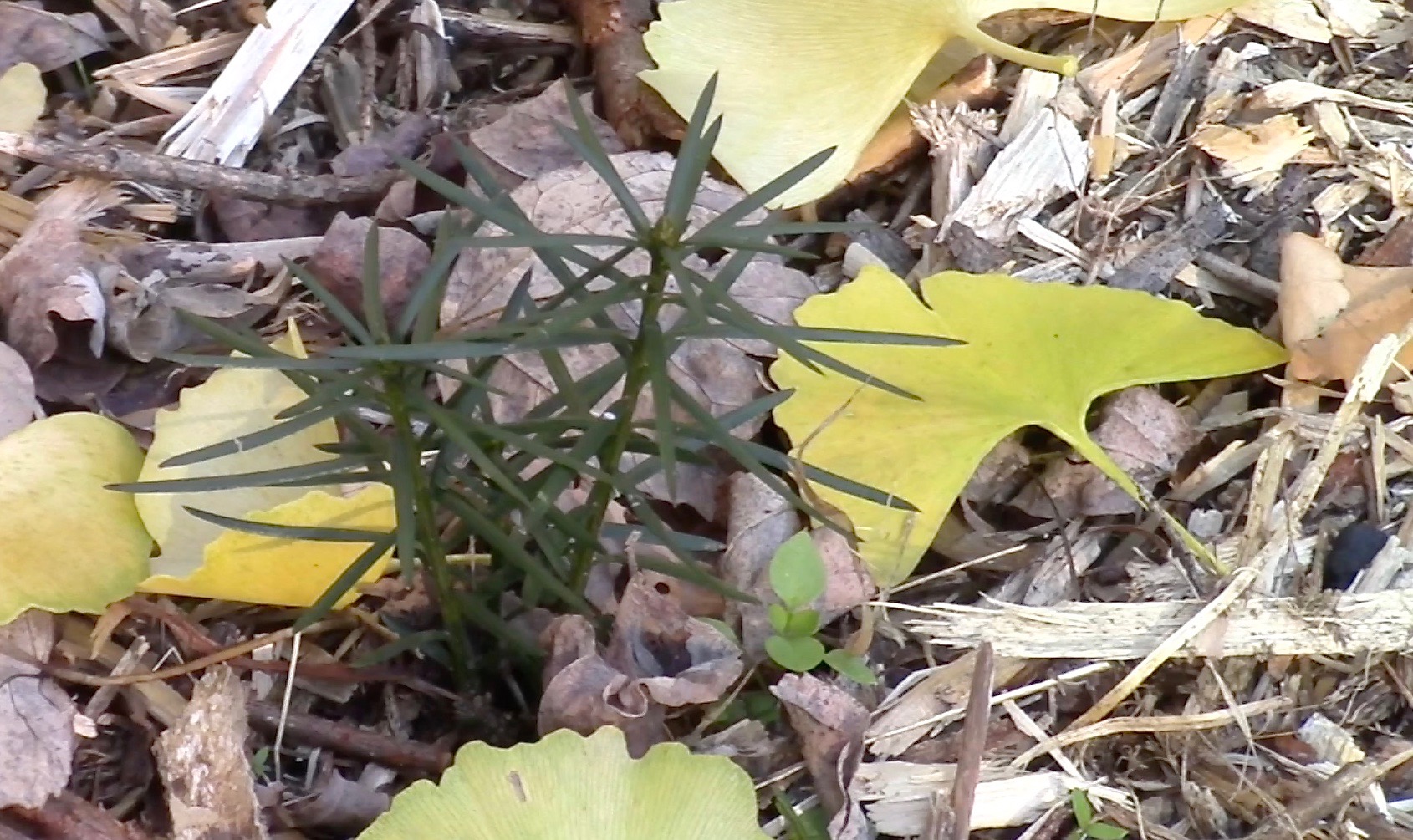
ABOVE: NOVEMBER 2017 more than half of the 22 seedlings showed one or two basals (left). None of the tallest seedlings had a basal. Instead, what was evident in the tallest seedlings (right photo) was initial vertical growth, followed by 1 to 3 laterals (3 laterals visible here) and then another vertical spur. At the top of this specimen's second vertical spurt one can see 3 lateral buds and an central apical.
• 19 January 2018 Bob Miller says: "Wanted you to know the two Torreya taxifolias I checked looked very happy despite the cold and snow."• June 11, 2018 - Email from Bob Miller: "Recently I found an overlooked bag with a few Torreya seeds packed in mulch. It had not been attended to in a long time. To my surprise two of the seeds had germinated. This is what I found (a couple weeks after planting). Amazing!" (PHOTO BELOW LEFT.) "So probably this fall two more Torreyas will go into the ground, though they seem to do well in our greenhouse. The two seedlings I planted a few years ago on the hillside still look healthy, but are not putting out much growth." Editor's note:Bob noticed those germinating seeds 14 months after he received (April 2017) 60 seeds from the Fall 2016 Medford OR harvest.
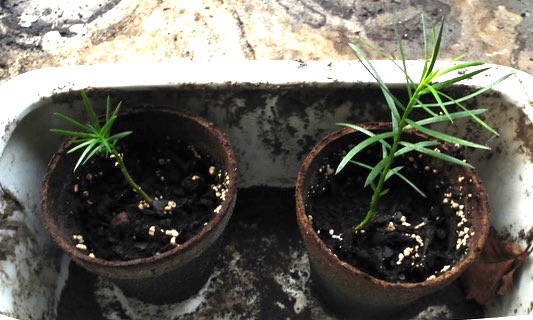
PHOTO ABOVE RIGHT: Also June 11, "These are two of nine pawpaw seeds that recently sprouted in containers in the greenhouse. Note how the sprout pushes through the soil. I planted the seeds in April after they spent the winter in our refrigerator."
• 29 July 2020 - Email from Bob Miller:
"Last fall I found one of the two seedlings I planted several years ago completely uprooted for the second time. Rather than replant it at the same spot, I put it into a pot and kept it in our greenhouse over the winter. PHOTO LEFT is what it looks like now — about double the height from last fall.
The other seedling, which had never been uprooted, died. What was the difference? I'm convinced that torreya is not suited for the deep shade of our maple-dominated forests here. This is supported by the experience of our neighbor John who planted maybe 30 seeds in his garden. Most produced seedlings and one is now nearly two feet tall. They are in full sun and not watered.
The other seedling, which had never been uprooted, died. What was the difference? I'm convinced that torreya is not suited for the deep shade of our maple dominated forests here.
This is supported by the experience of our neighbor John who planted 29 seeds in his garden. Most produced seedlings and one is now nearly two feet tall. They are in full sun and not watered.
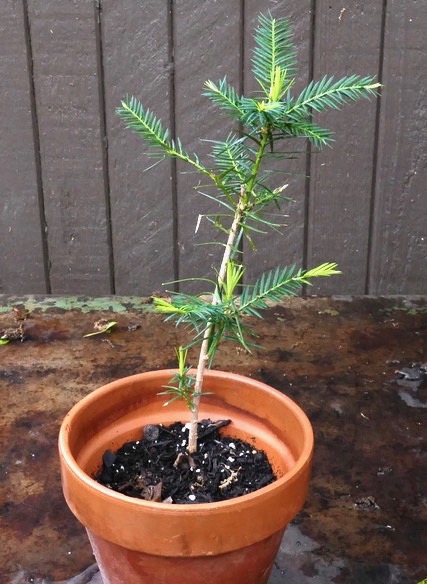 ABOVE PHOTOS: Left is the uprooted seedling, July 2020. Right is July 2021.• 15 July 2021 - Email from Bob Miller:
ABOVE PHOTOS: Left is the uprooted seedling, July 2020. Right is July 2021.• 15 July 2021 - Email from Bob Miller:"Our twice uprooted Torreya has recovered well and put out a significant amount of new growth this spring while still in our greenhouse. It will be a container plant, at least for the near term. It sure looks a heck of a lot happier."
• 24 April 2025 LEFT: Photo by Patrick Murphy:
Patrick Murphy, a Cincinnati resident, became a Torreya Guardians planter and scout in 2024.
In late April he revisited the Torreya plantings of Bob Miller's neighbor, John Patterson, in order to assess the amount of winterkill owing to unusually low temperatures that occurred January 21 and 22 (zero and -2 F). Notably, there was no snow on the ground to insulate the soil.
First he visited the one remaining torreya plant on Bob Miller's property (left), following many years of destructive herbivory.
Torrey Plantings at JOHN PATTERSON's
(property next door to Bob Miller)• AUGUST 2020
Nearing the end of their 4th year after seed-planting in this fully rodent and deer protected garden edge, the torreyas look very happy.
PHOTO ABOVE: This is the section to the left of the gate, which showed in November 2017 a total of 13 little seedlings (see November 2017 entry above). The total count of seedlings on this side is now 11. PHOTO LEFT: This is the section to the right of the gate. In 2017 there were 9 seedlings visible; today there are 8.
The numbers above would indicate that 3 are missing, but this does not indicate death. Rather, earlier this summer, John (the neighbor and proprietor of this vertebrate-proof garden) transplanted 3 of the total 22 seedlings into his woods.
It will be interesting to monitor the 3 transplanted seedlings through the years, as deer herbivory is certain. It is, however, likely that the exposed 3 seedlings might be lush enough to withstand browsing and simply to regrow more densely shrubby, as indications are that deer only sample-browse Torreya. They do not entirely consume it. The biggest problem is when a deer lops off the entire main stem when the seedling is freshly germinated. The seed has enough energy to try once more, but if that is nibbled off too, there is no regrowth.
• June 12, 2021 - "... As I've said before, our few seedlings do not like the heavy shade of our woods. The seedling I found completely uprooted has recovered well and put out a significant amount of new growth this spring while still in our greenhouse. I may keep it as a container plant for the foreseeable future."
• July 25, 2021 - email to Connie Barlow from John Patterson , who is the next-door neighbor of Bob Miller and who has the deer & rodent proof garden depicted above in the August 2020 photo:
"So far, of the nine torreya trees I have moved the last two years into my woods with high overhead canopies, all have done well — despite the fact that this year two of the properties near me had seen a group of 18 does in their pastures one day and there are three major paths the deer use crossing my property along with between 9 and 12 bucks. Yet, only one tree has been nibbled on but little damage to the tree.BELOW: Photos by John Patterson of Trees numbered 4, 5, 6, 7, 8, 9. (July 2021)
The 9 remaining trees in my garden are getting big, so I know I will have to dig deep to move them this fall.
I have enclosed pics of the 9 in the woods, which may be hard to see as I have let the weeds grow to hide the trees. Just to let you know I also have about 15 young Pawpaw trees near my creek but have never seen fruit on them."
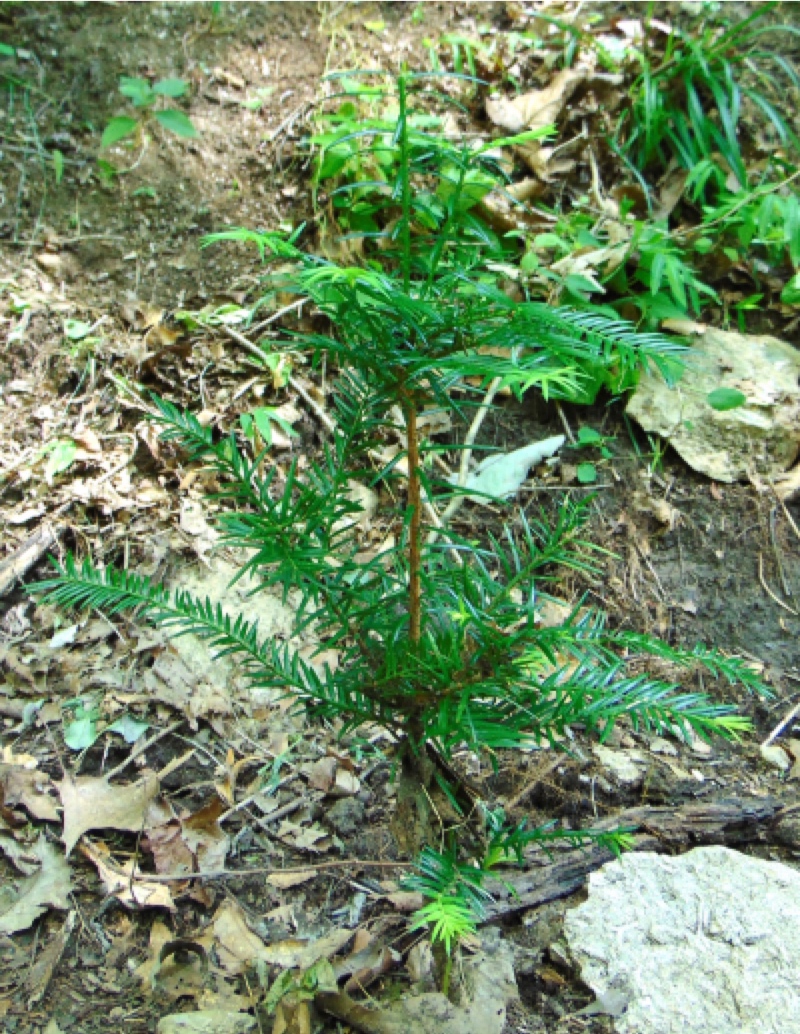
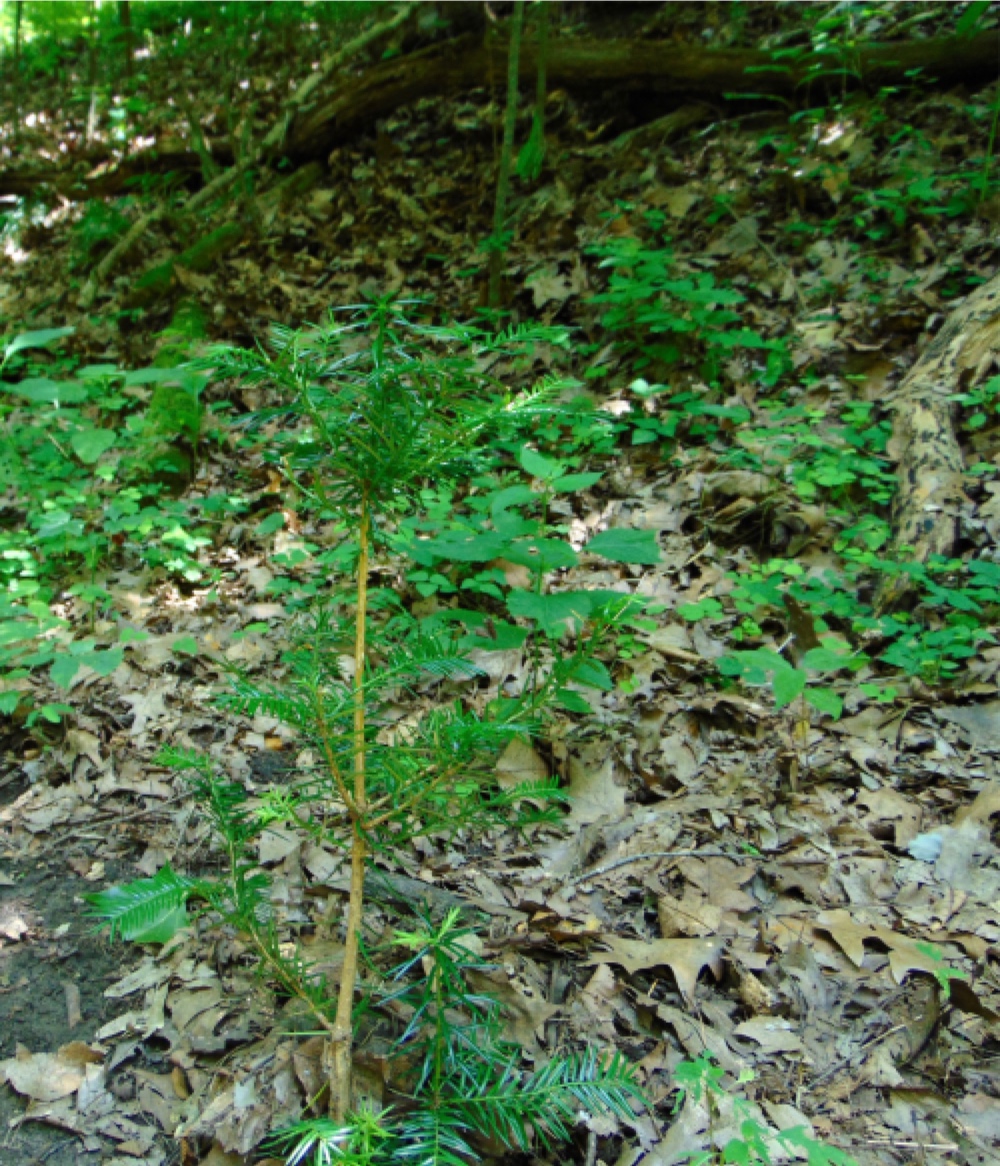

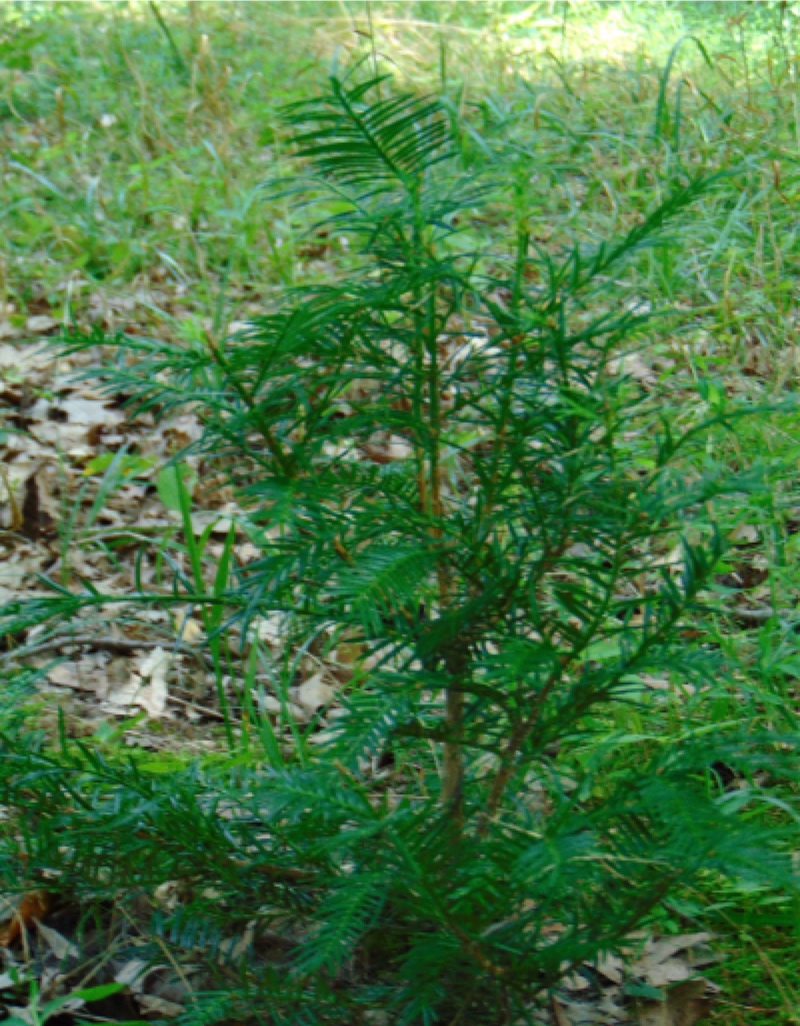
• April 25, 2022 - email to Connie Barlow from John Patterson :
"This spring I found that 1 tree was topped by deer; 2 were heavily hit by the cold but have green limbs near the ground. I will watch them to see how they may over come the damage. There are 5 trees that survived without much damage. The torreyas remaining in my fenced garden I was not able to move this last fall, and I know I will have to fence them in when I move them this coming fall."• September 2022/ Bob Miller / Joyful discovery of a torreya (from seed planted May 2015) by a log while removing invasives
Email from BOB MILLER to Connie Barlow: "An upside of removing invasive plants from our woods is that I find interesting things. This Torreya is on the south-facing hillside across from the front of our house and is the first I've found there. Looks very happy!"Editor's Note: We have long postulated that the poor success rate of the May 2015 free-planting into wild forest may owe to shallow seed-planting that led to rodents detecting seeds, large local numbers of deer nipping off newly emerged seedlings, or the simple fact that seedlings are difficult to spot amidst fallen leaves. Did this seed (or seedling) benefit from a treefall that kept it hidden?
• April 2024/ email to Connie from Patrick Murphy (Cincinnati) / John Patterson has a torreya nearly 10 feet tall
"I made my way out to the site a couple weeks ago and got a chance to check out the torreya trees on both of their properties. It looks like John has the biggest tree that was growing in an old vegetable garden. It was around 8-10 feet tall. This gave me some ideas on placement in my own yard. I might try placement in more sunny areas, with plenty of added compost. Also, the deer pressure wasn't too bad in the wooded areas as I had thought it might be, but I'm still planning on putting up fencing to keep them out at my parent's property. I think John had mentioned the germination rate on the seeds was very high for him. Hopefully I can get the same result!"
• 24 April 2025/ email to Connie from Patrick Murphy (Cincinnati) / Documenting winter kill after an unusually severe cold spell in January
LEFT: Map of jetstream trough bringing polar temperatures to midwest states (including Cincinnati, Ohio): January 21 and 22 (zero and -2 F). Notably, there was no snow on the ground to insulate the soil.
8 TORREYAS
Photos by Patrick Murphy
(Interpretations will follow after regrowth documented)____________________ JOHN TREE #1
Hill-top near the house; mowed lawn; open to west and southwest wind
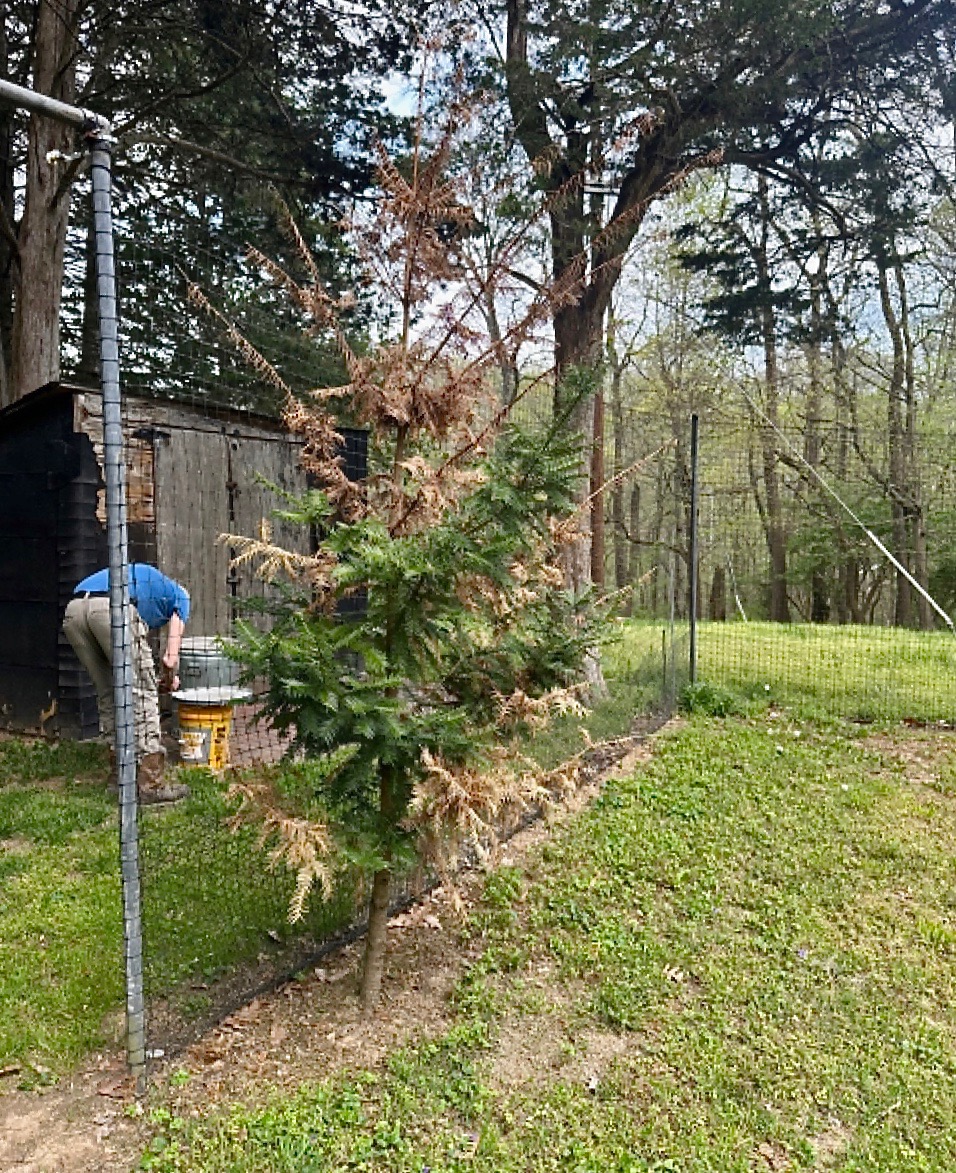
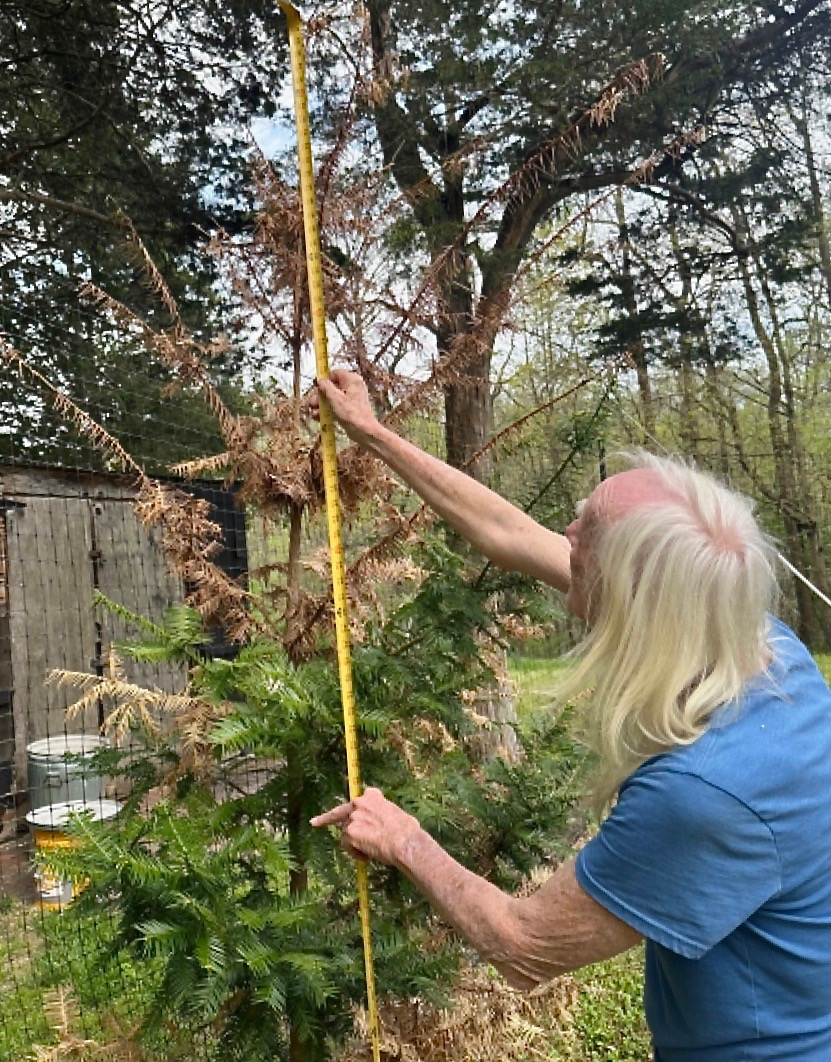
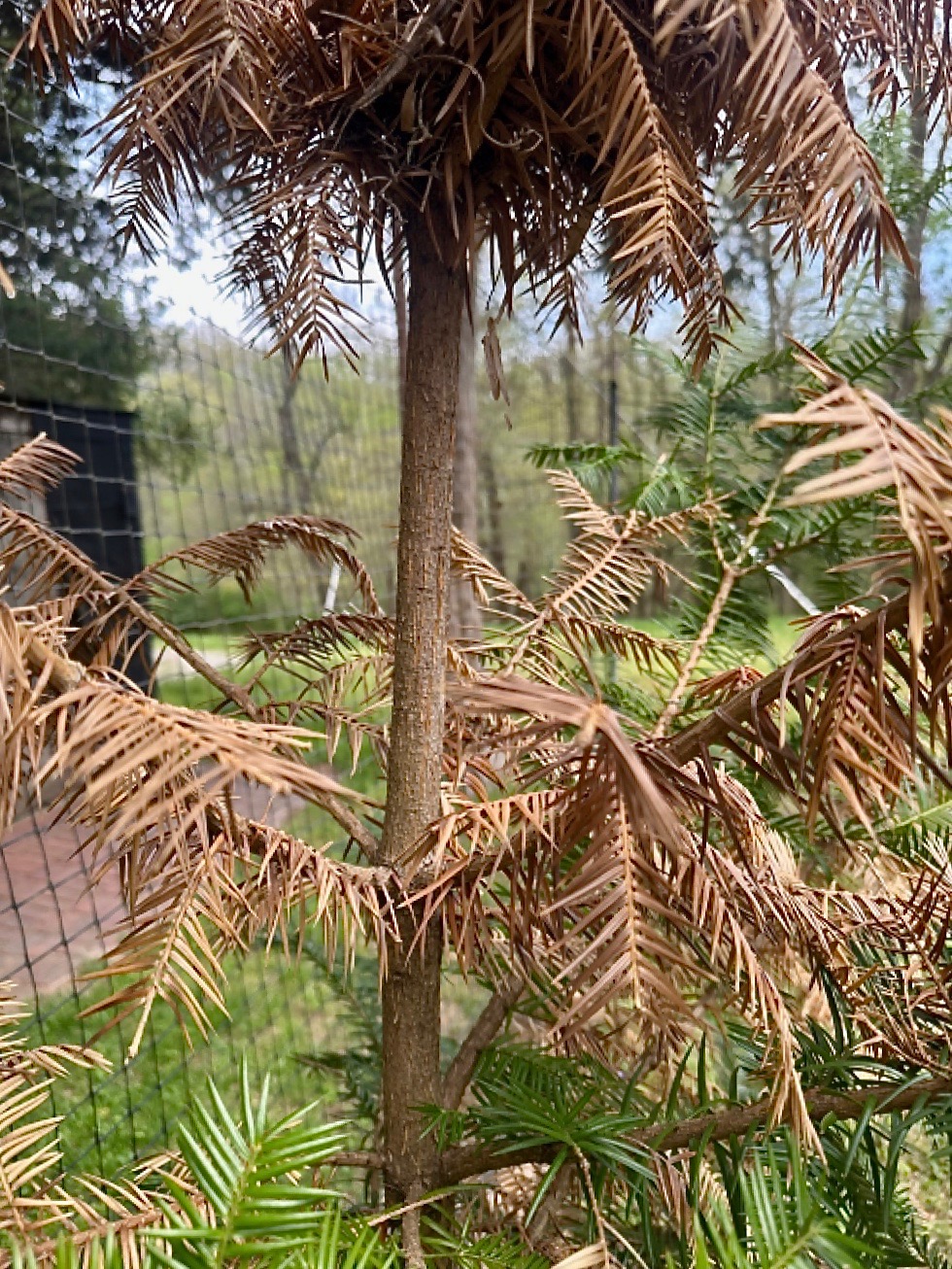
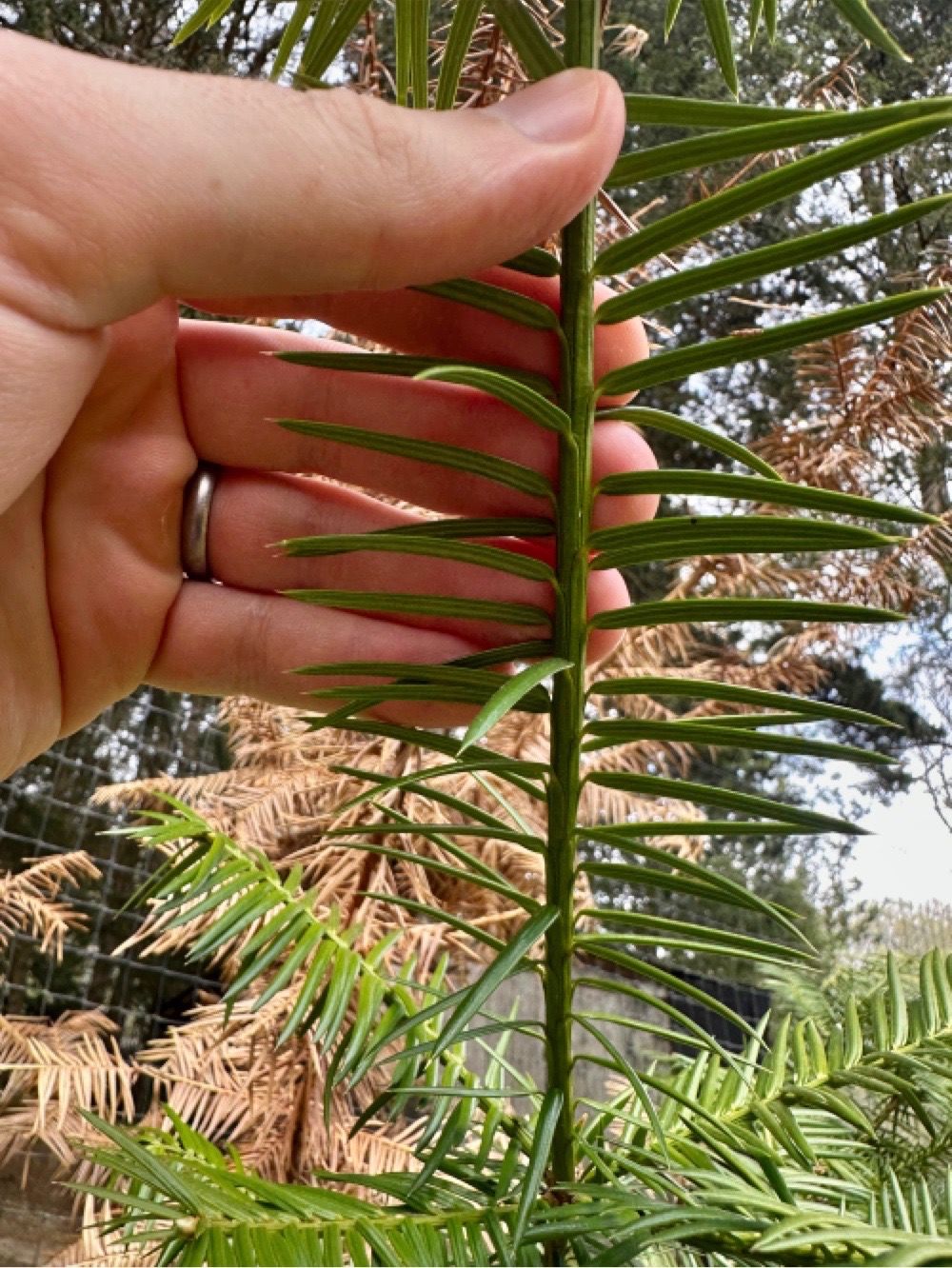
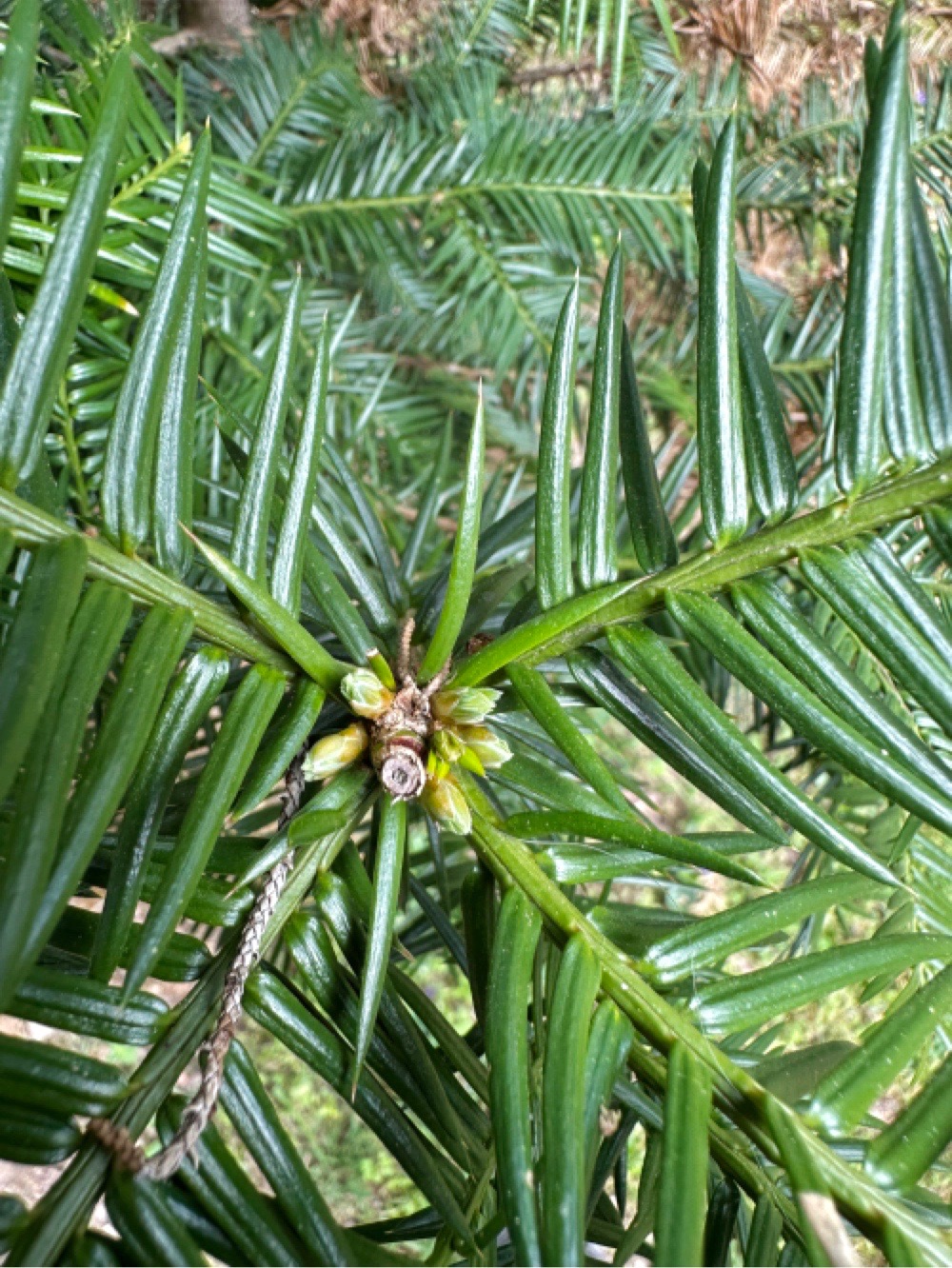
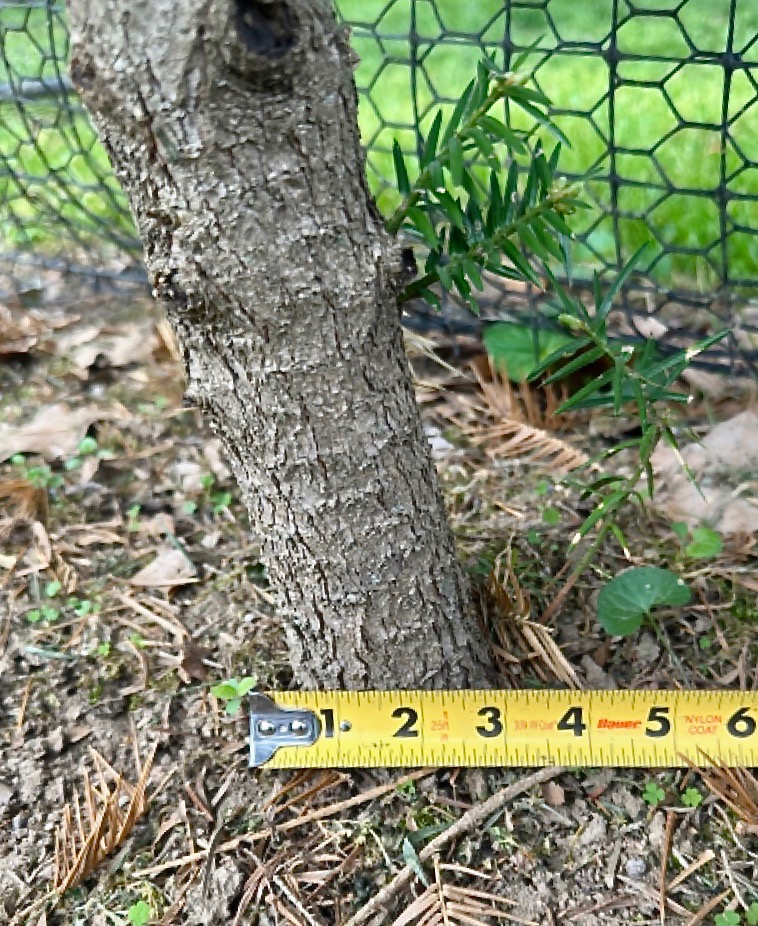
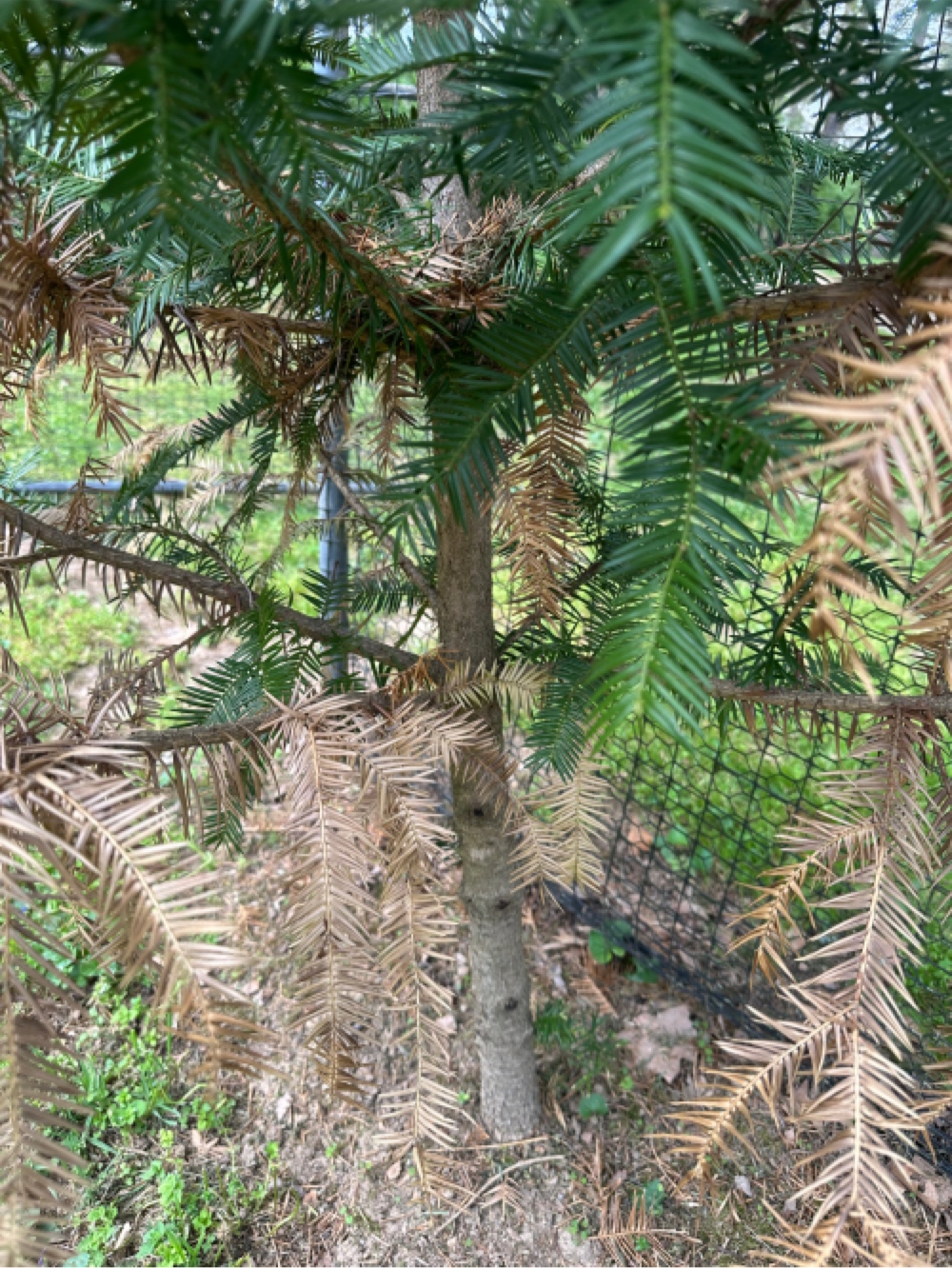
____________________ JOHN TREE #2
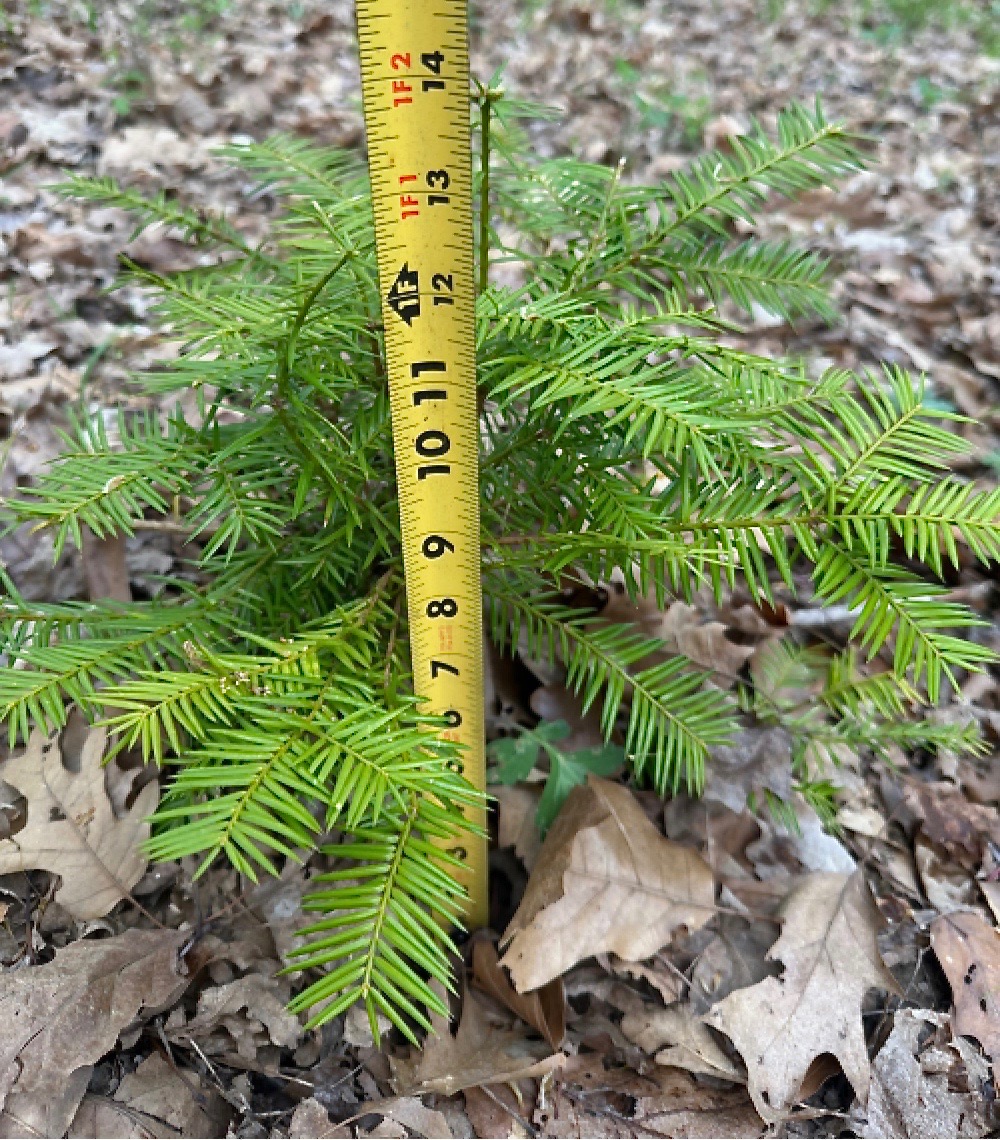

____________________ JOHN TREE #3
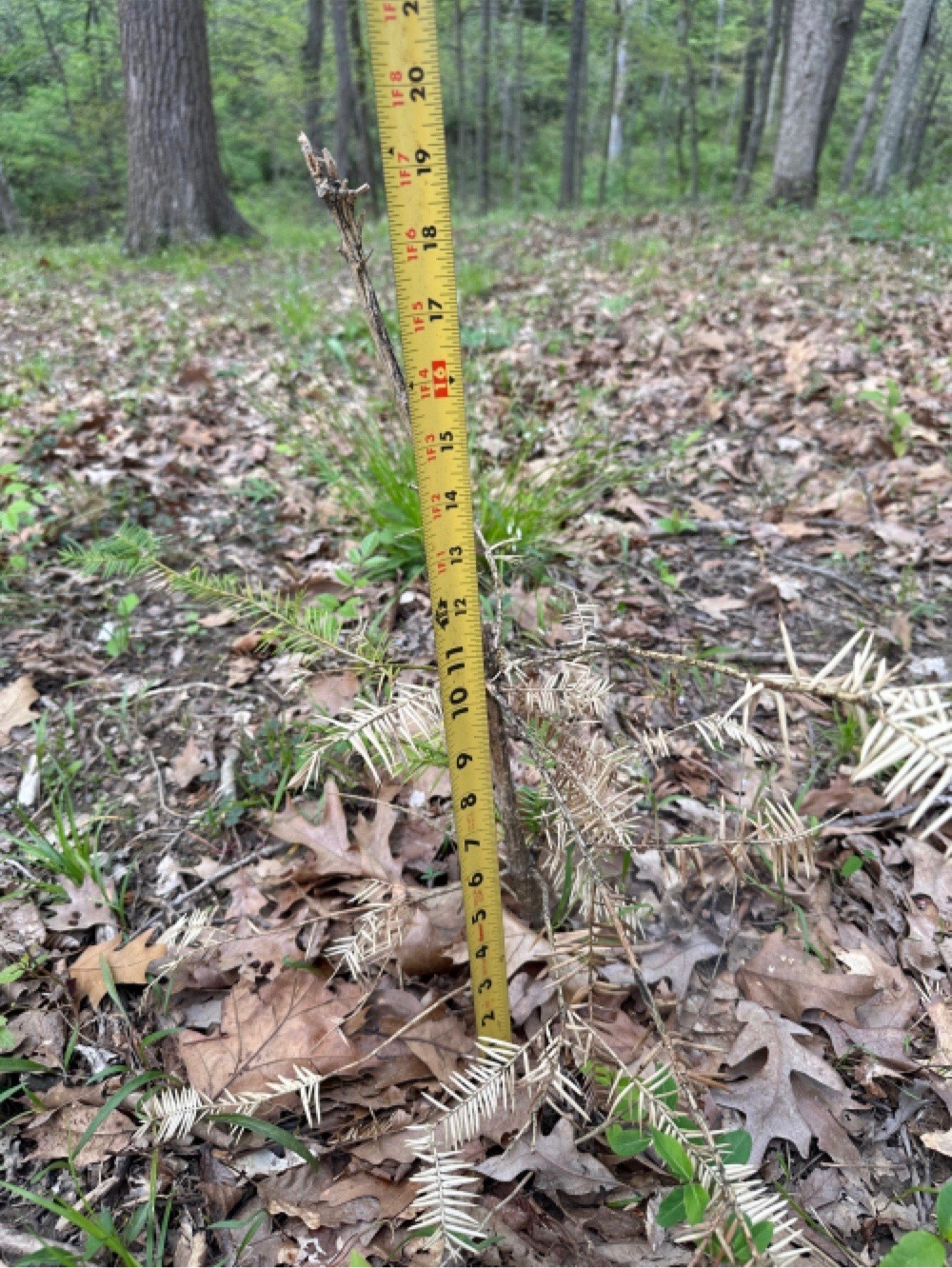
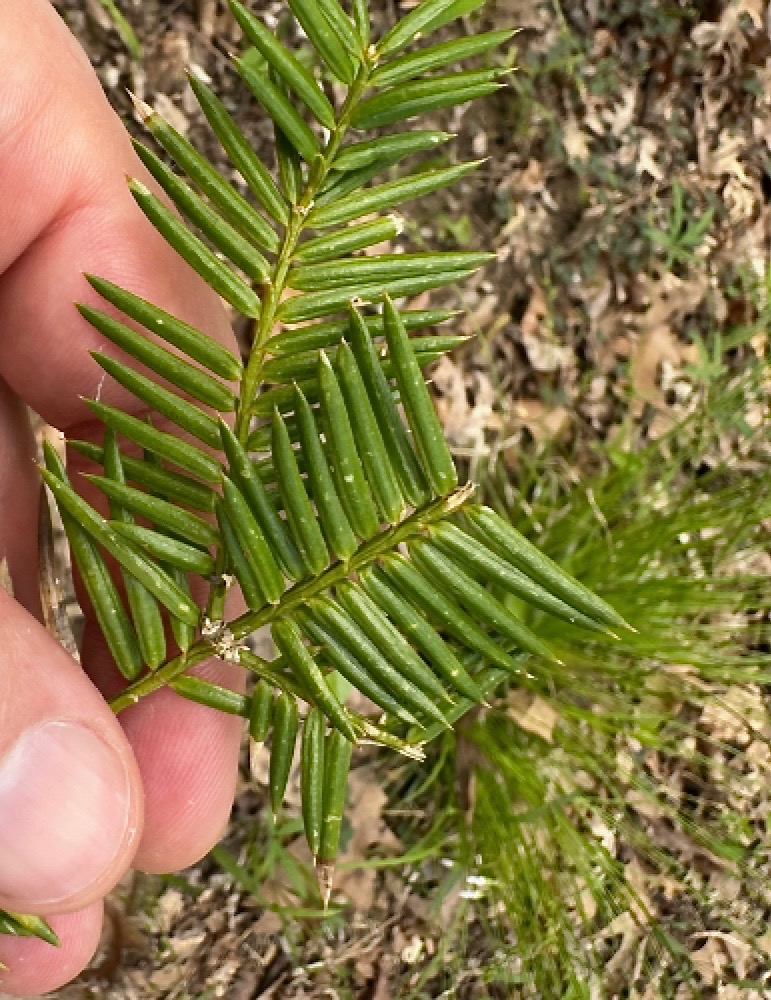
____________________ JOHN TREE #4
Patrick Murphy writes: "Overall, the trees on the downhill slope closer to the creek generally performed better than those farther uphill. I think this may have created a microclimate for them keeping the temperature slightly more stable, and with less exposure to wind." (Trees #4 through #8 are downward on the hill slope, closer to the creek.)
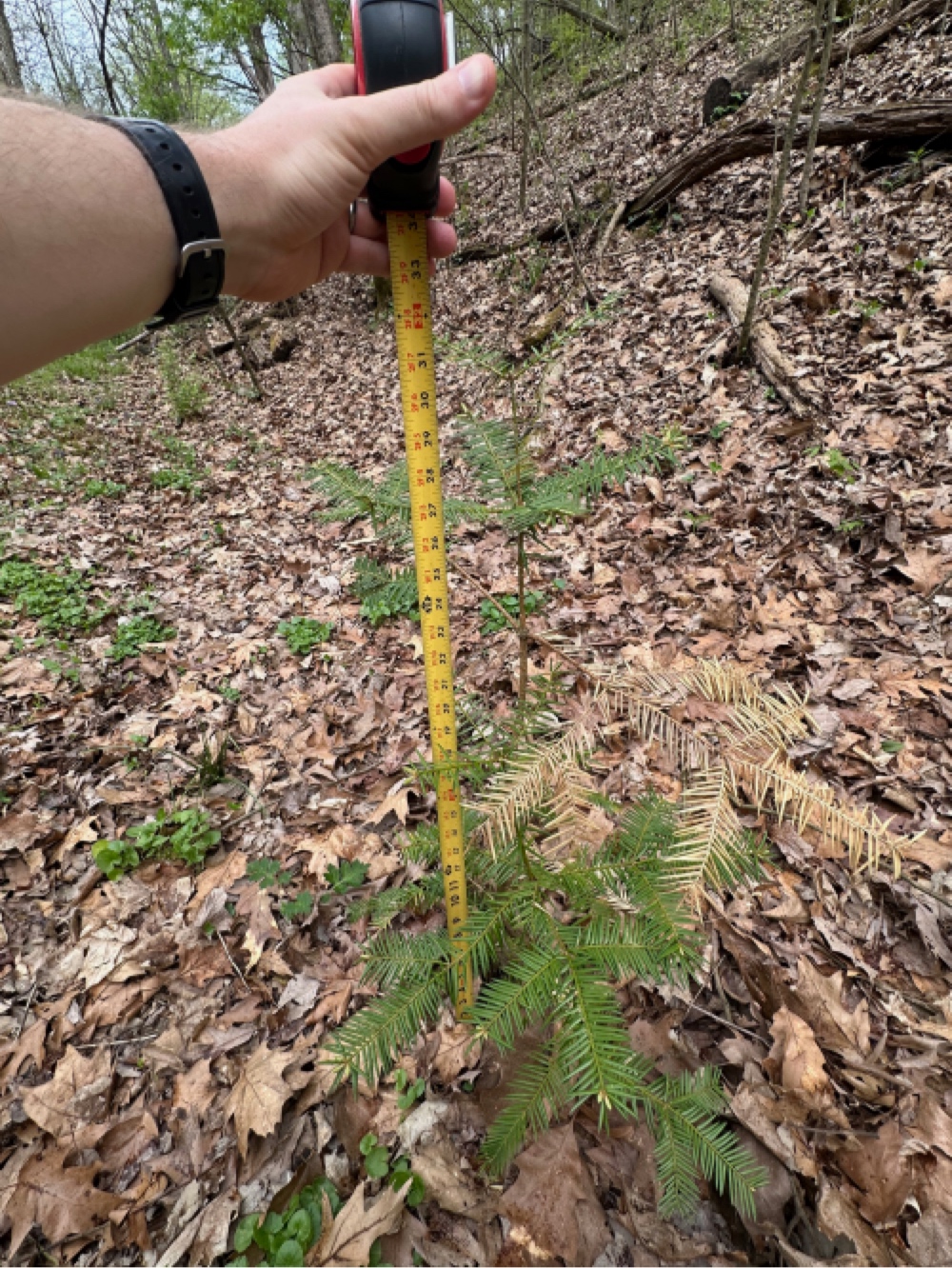
____________________ JOHN TREE #5
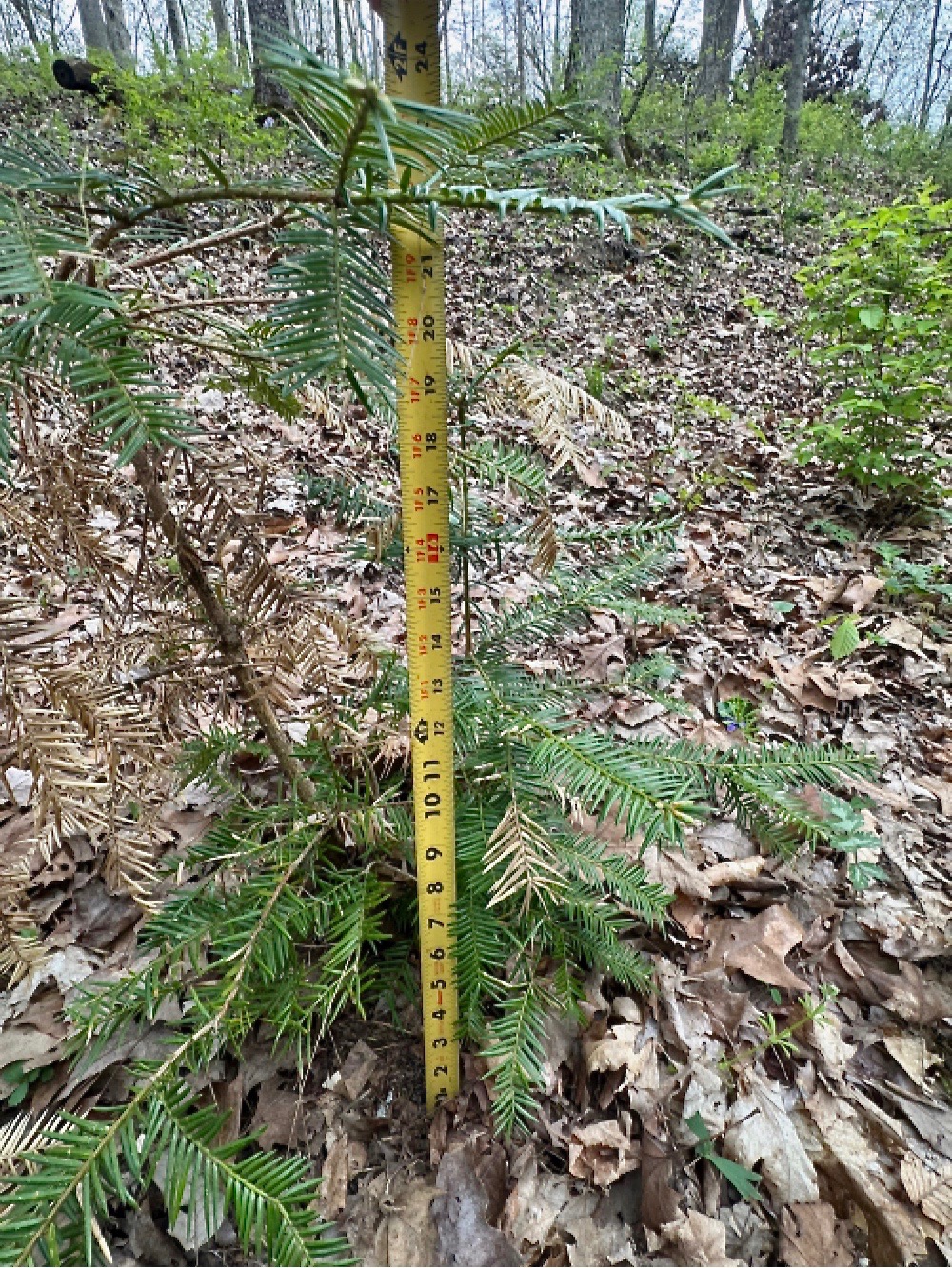
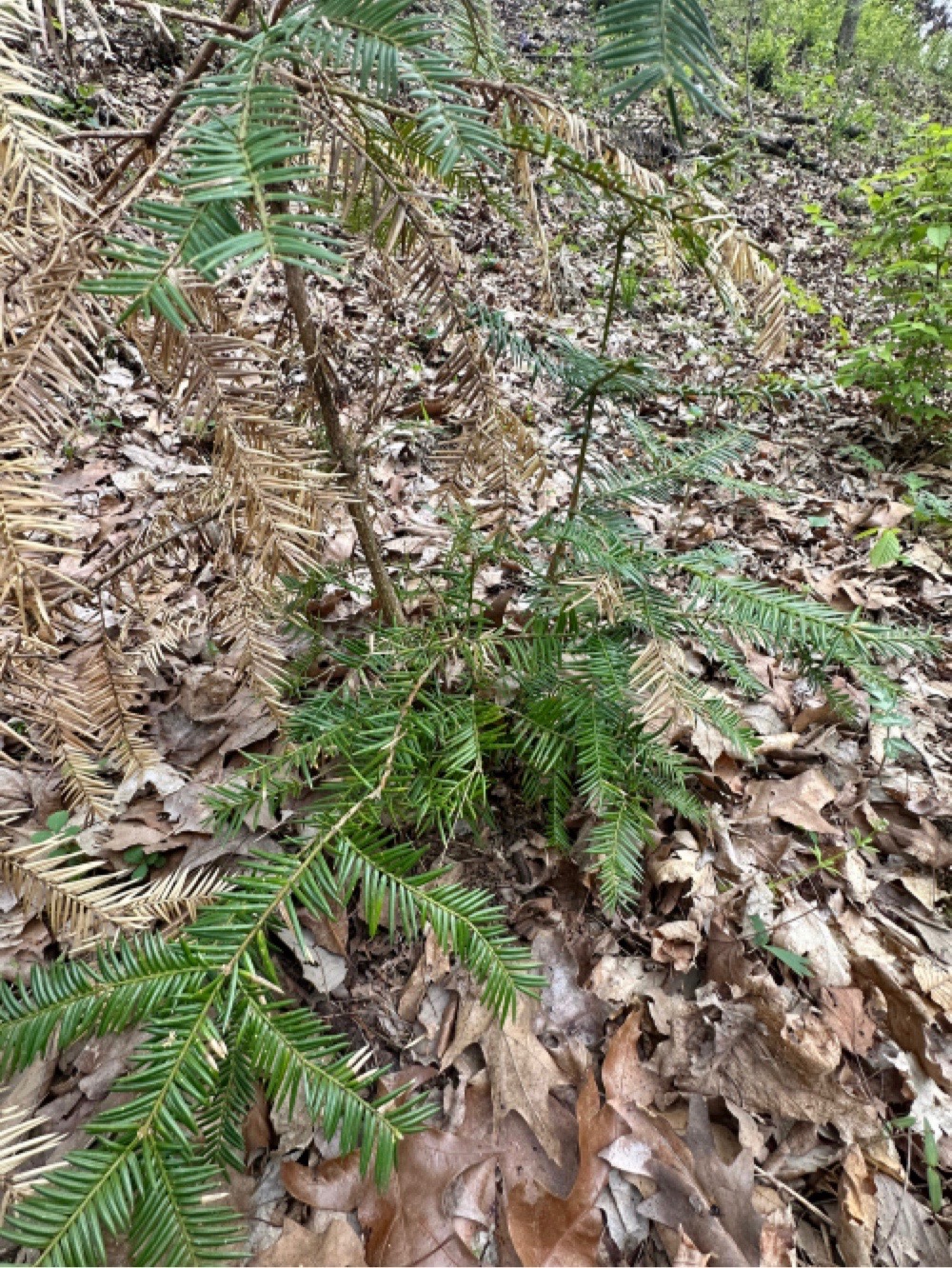
____________________ JOHN TREE #6
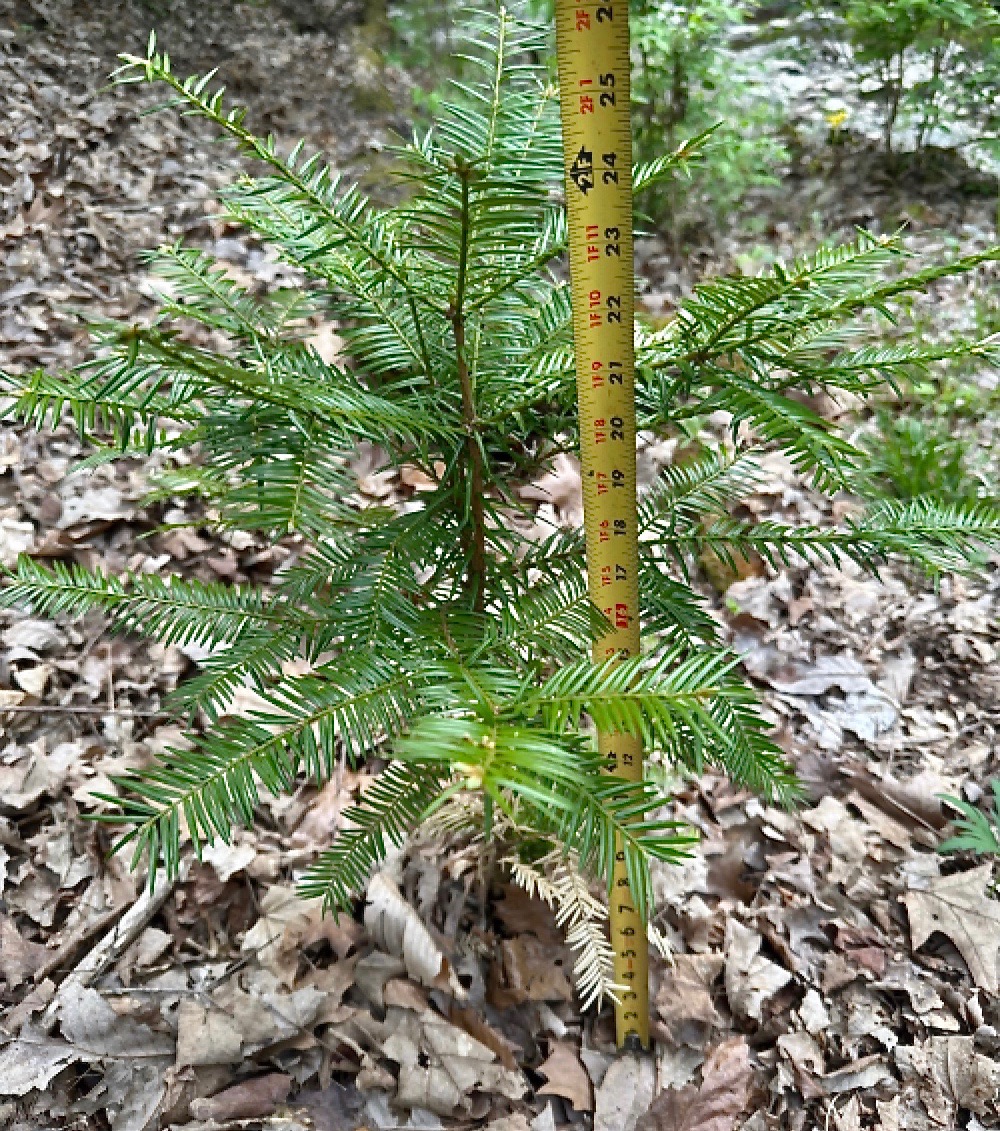
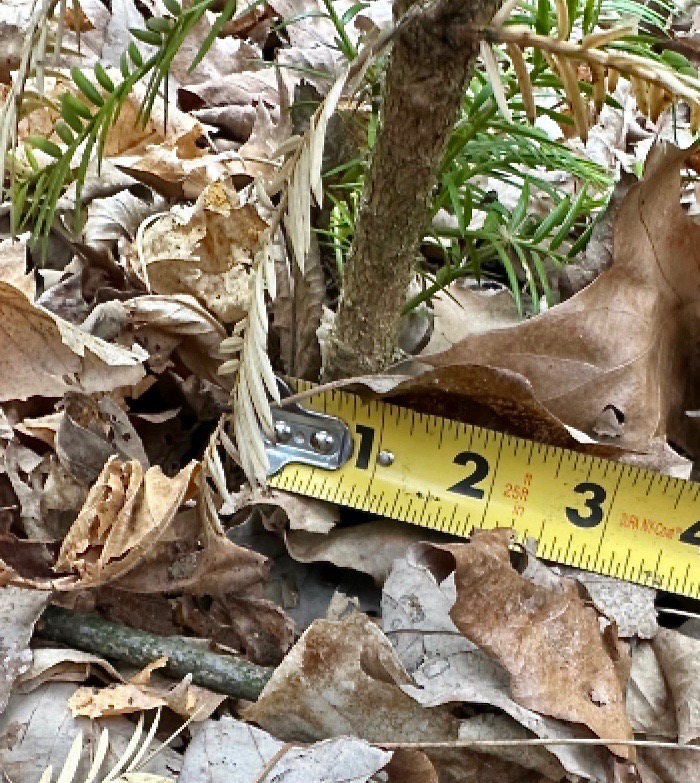
____________________ JOHN TREE #7
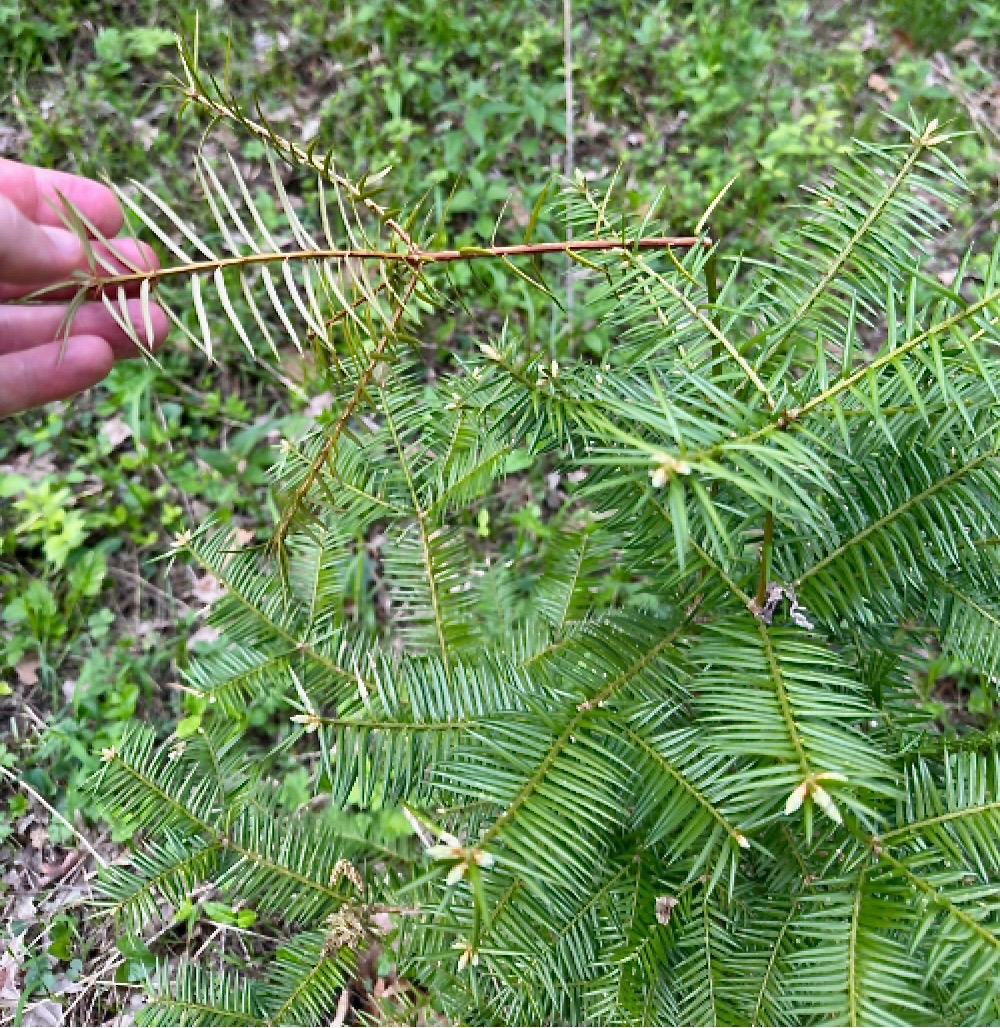
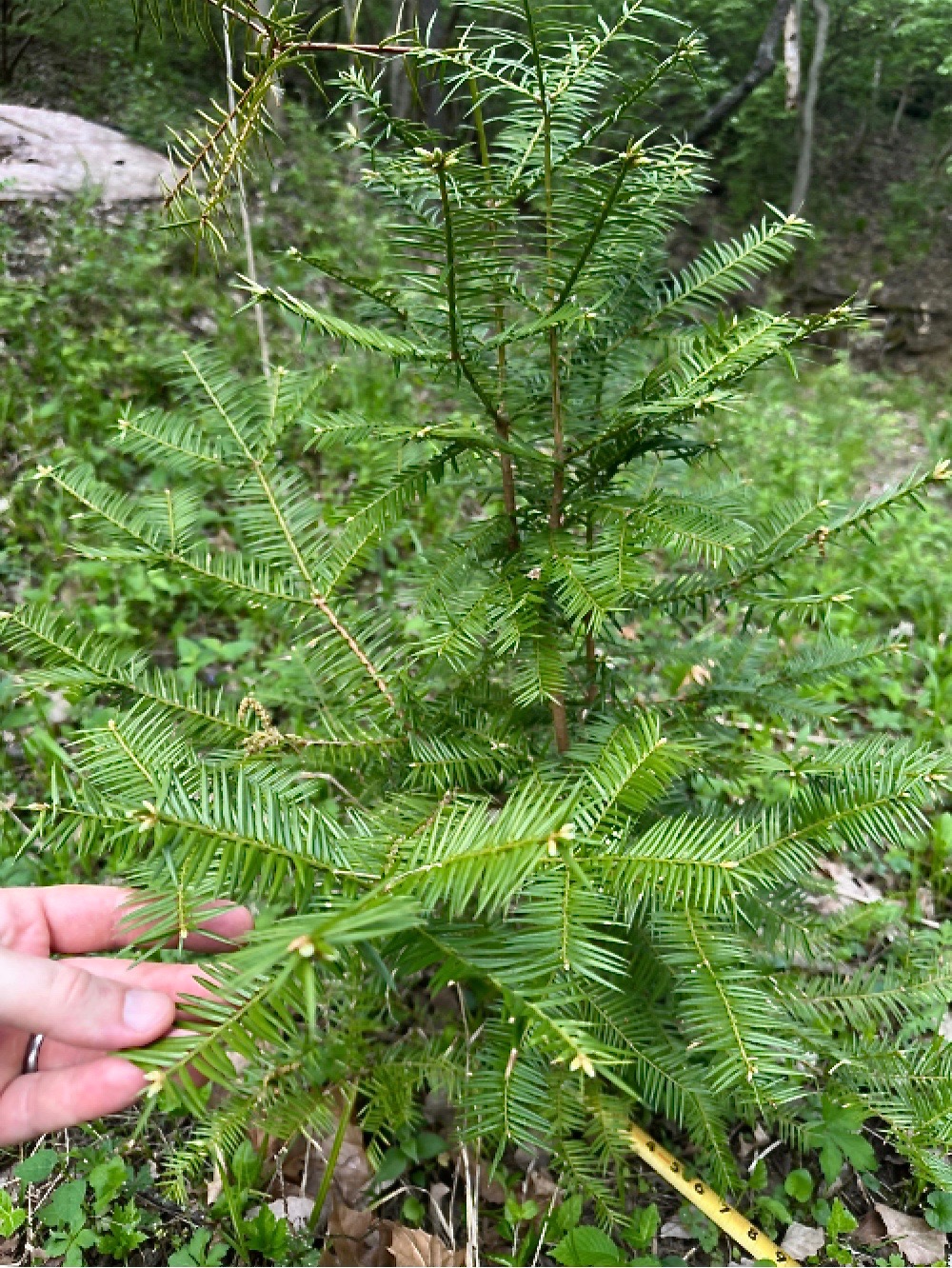
____________________ JOHN TREE #8
